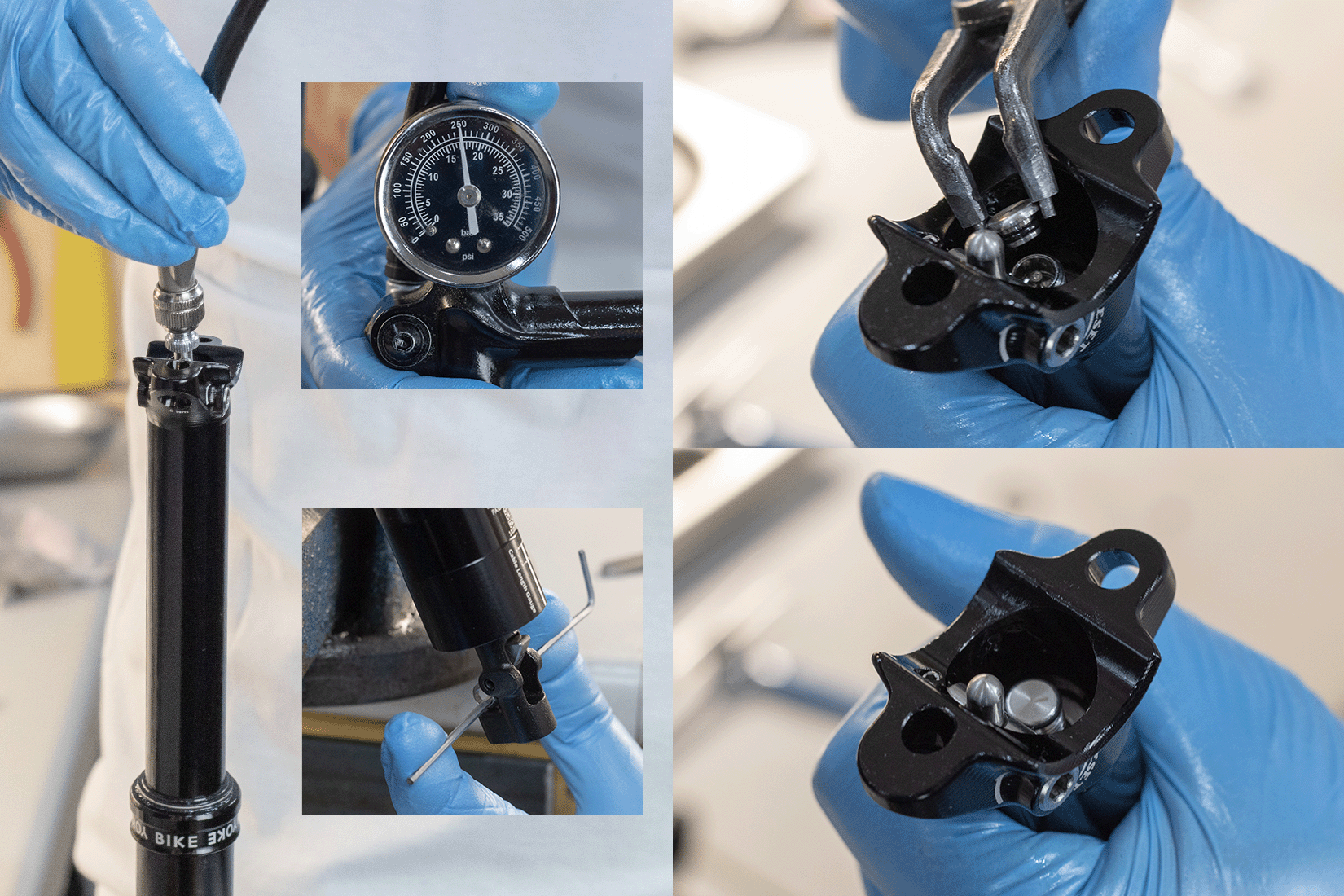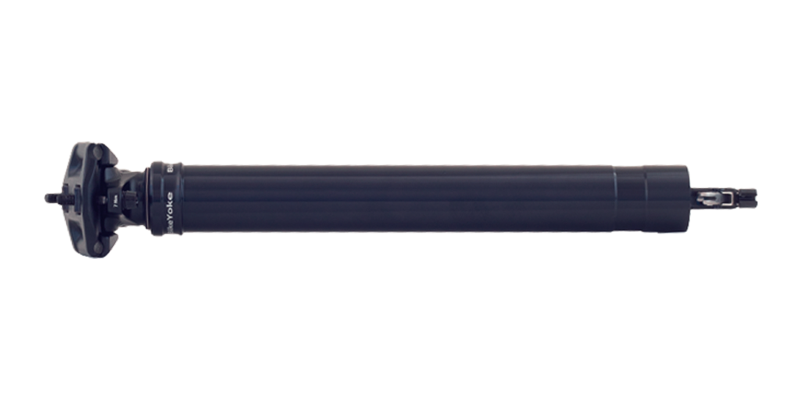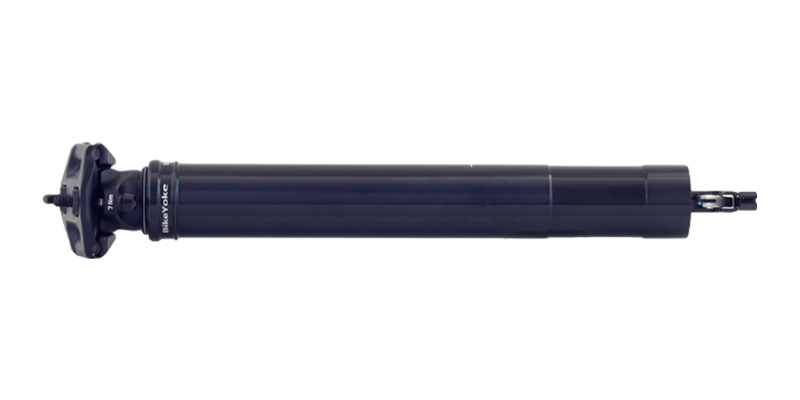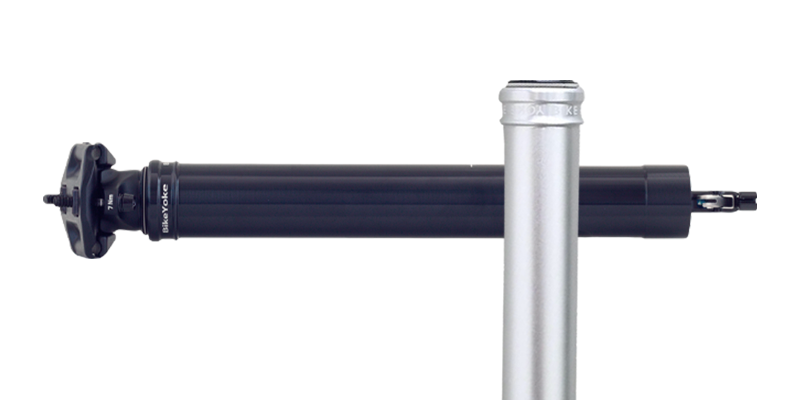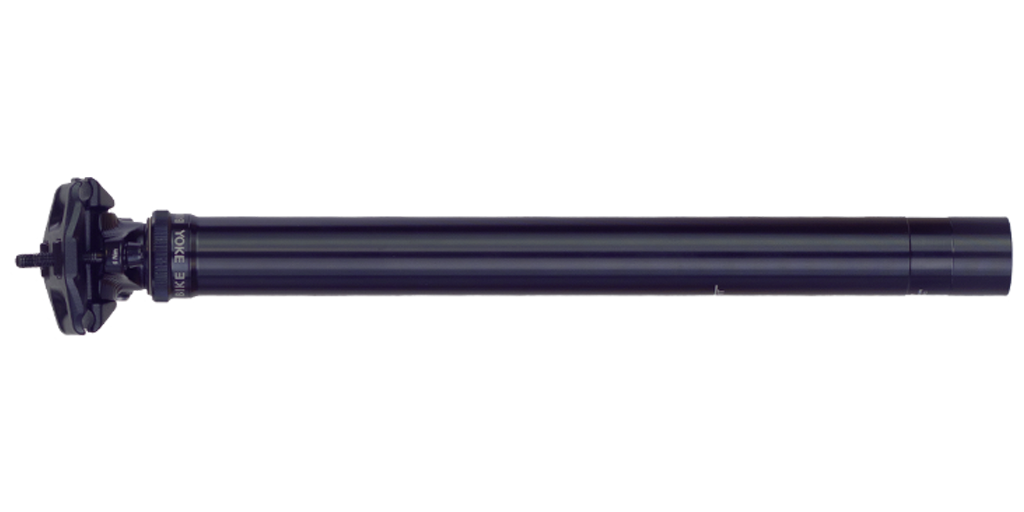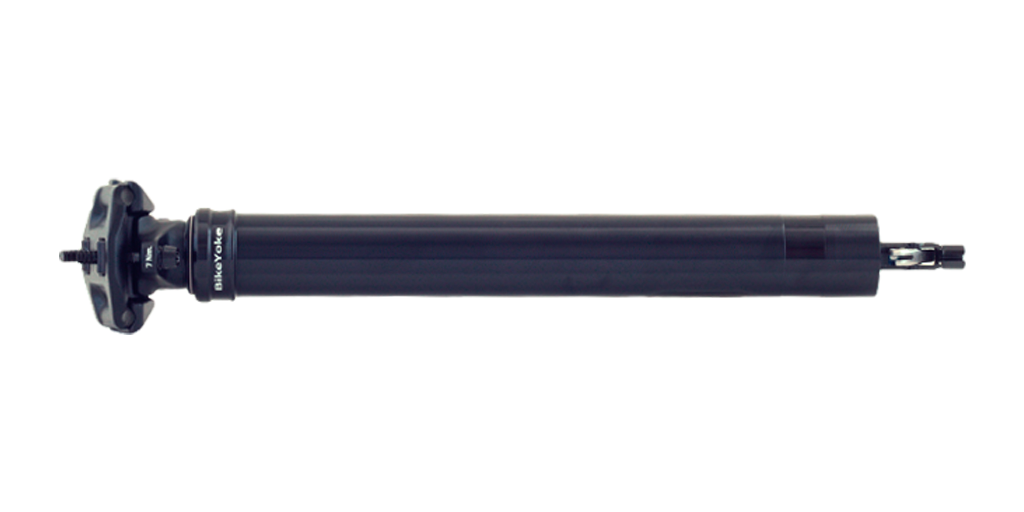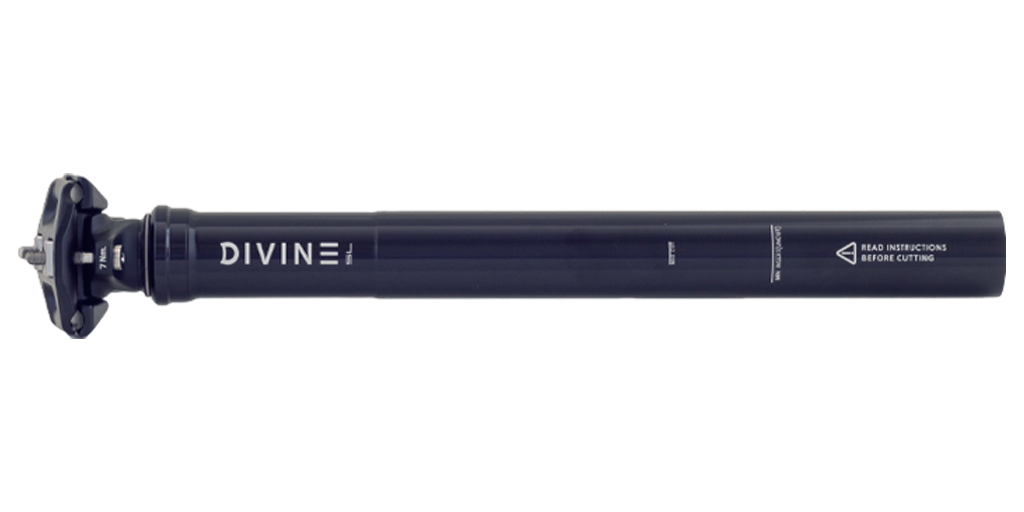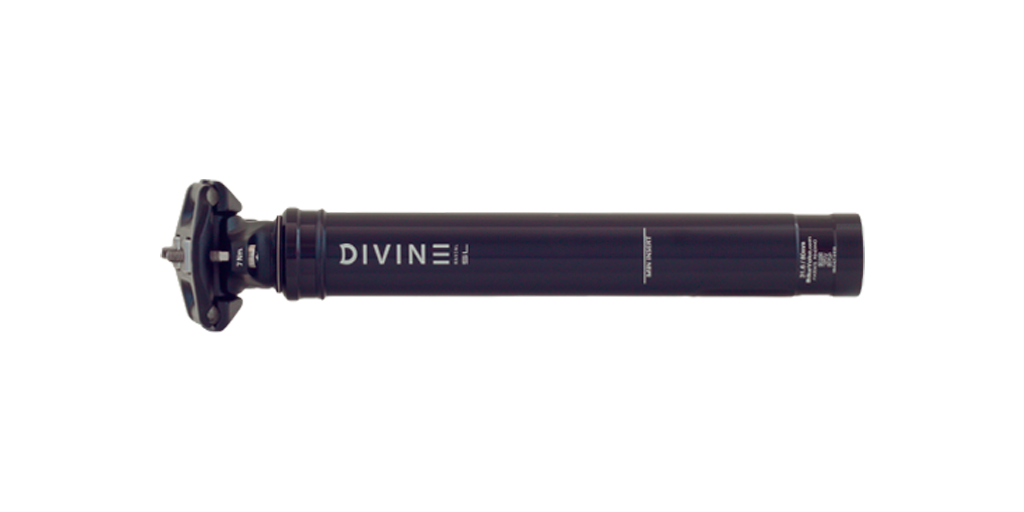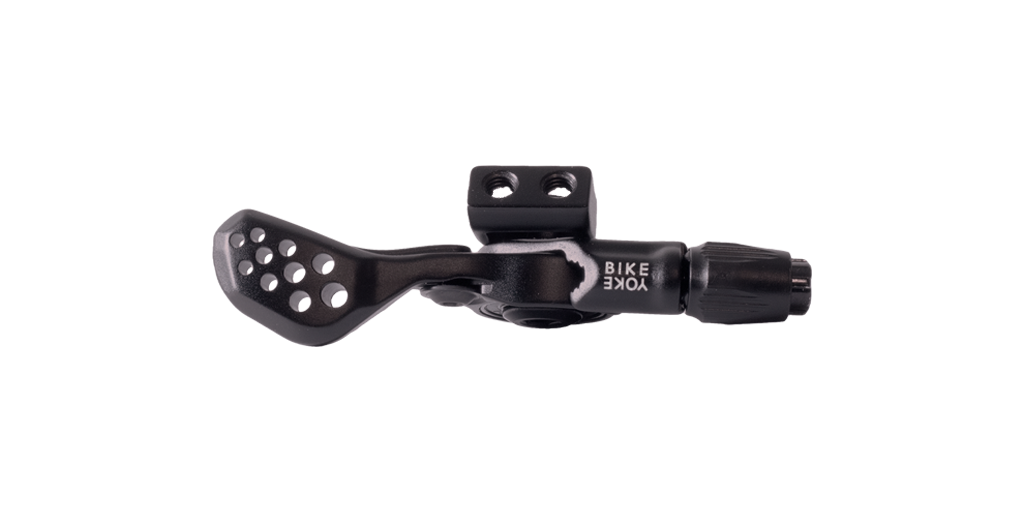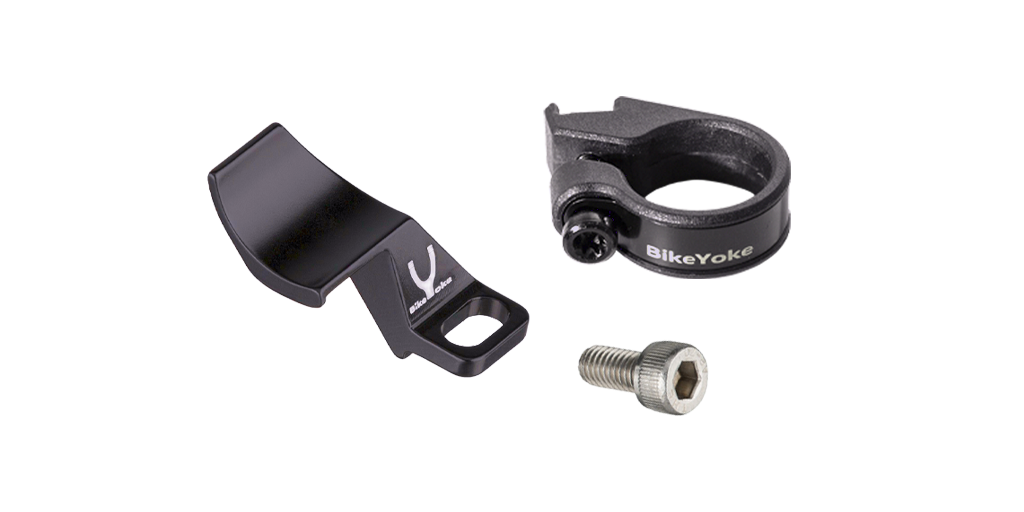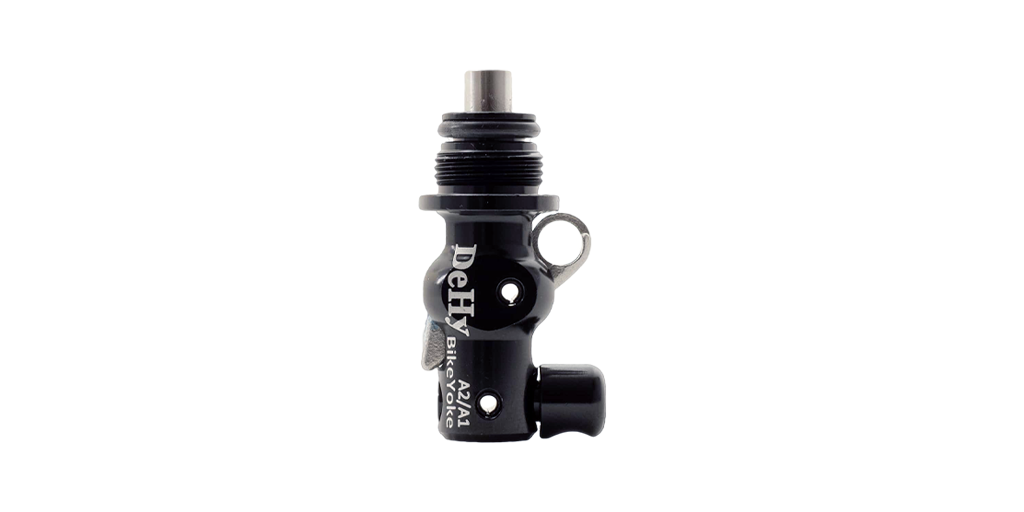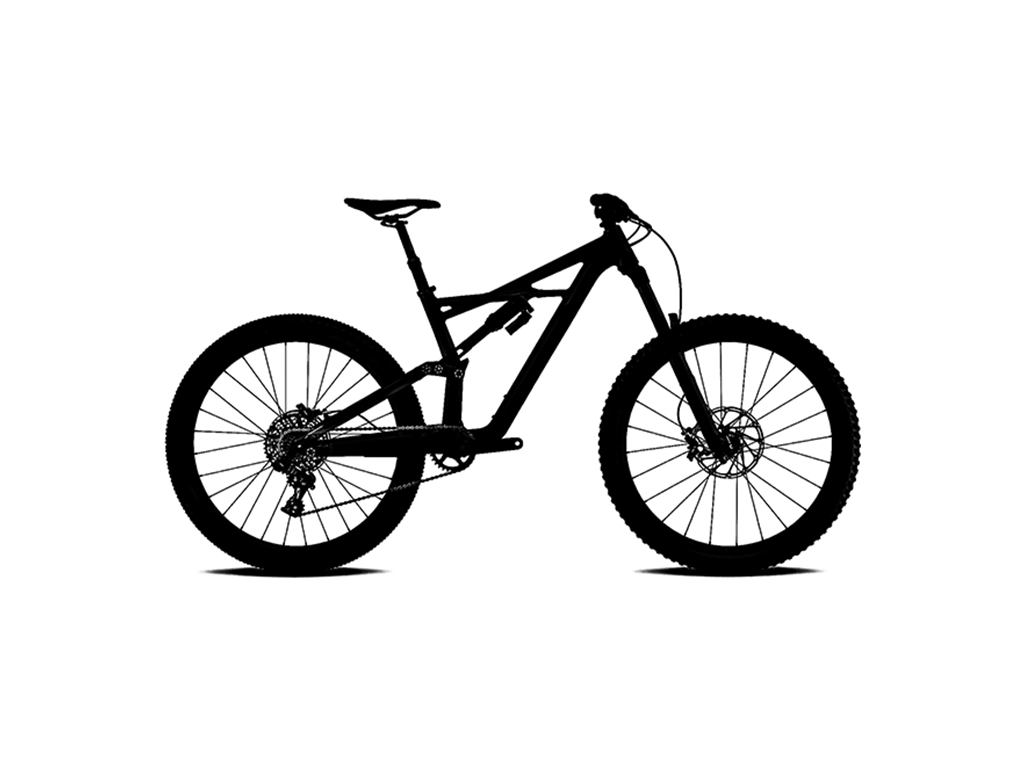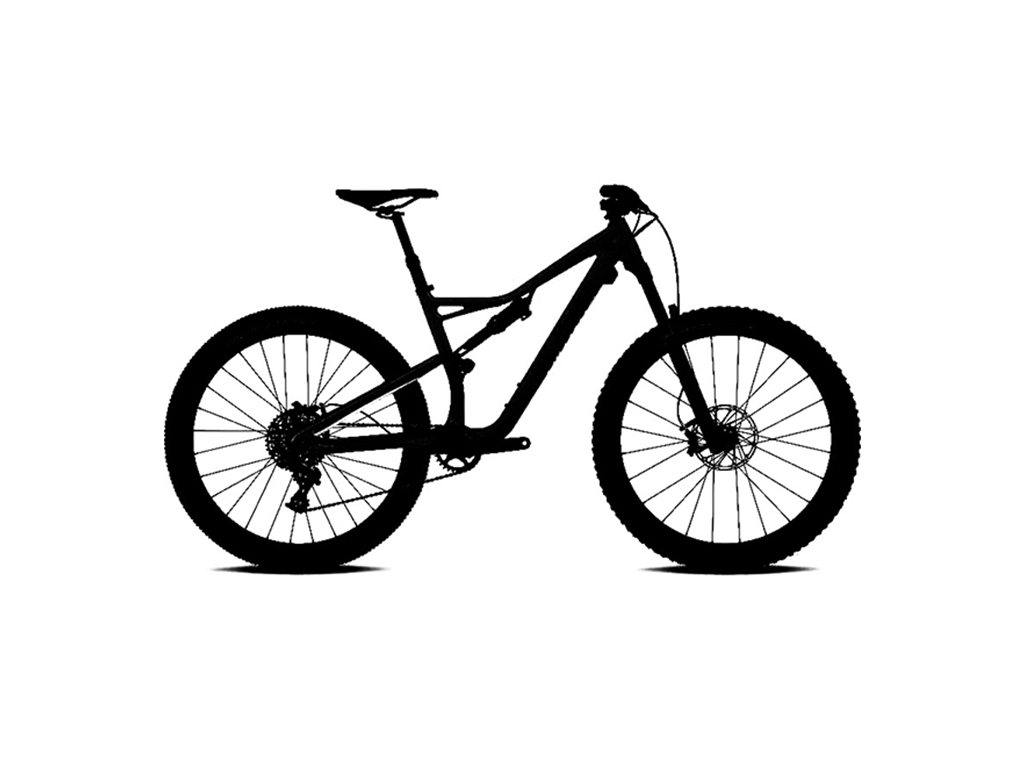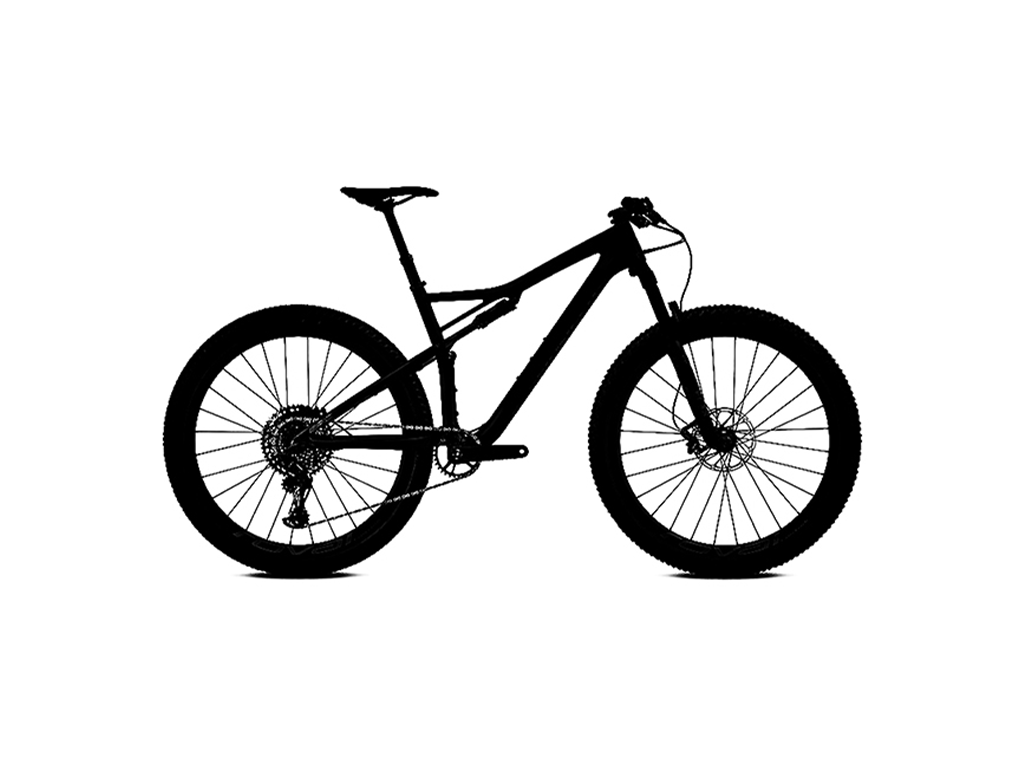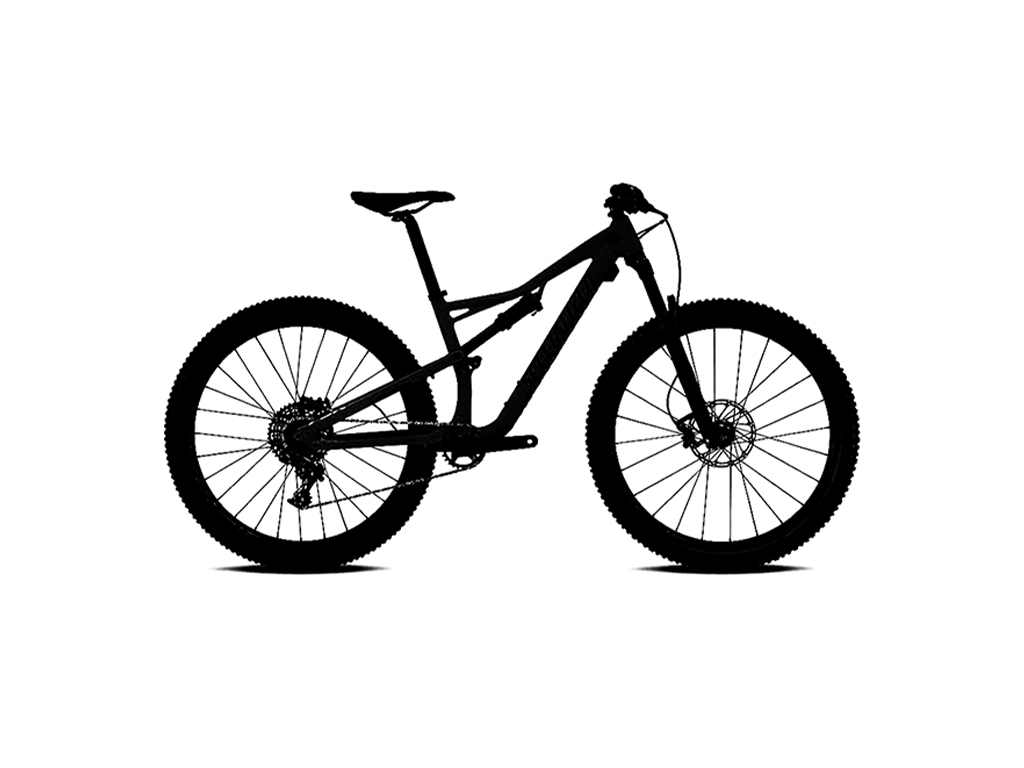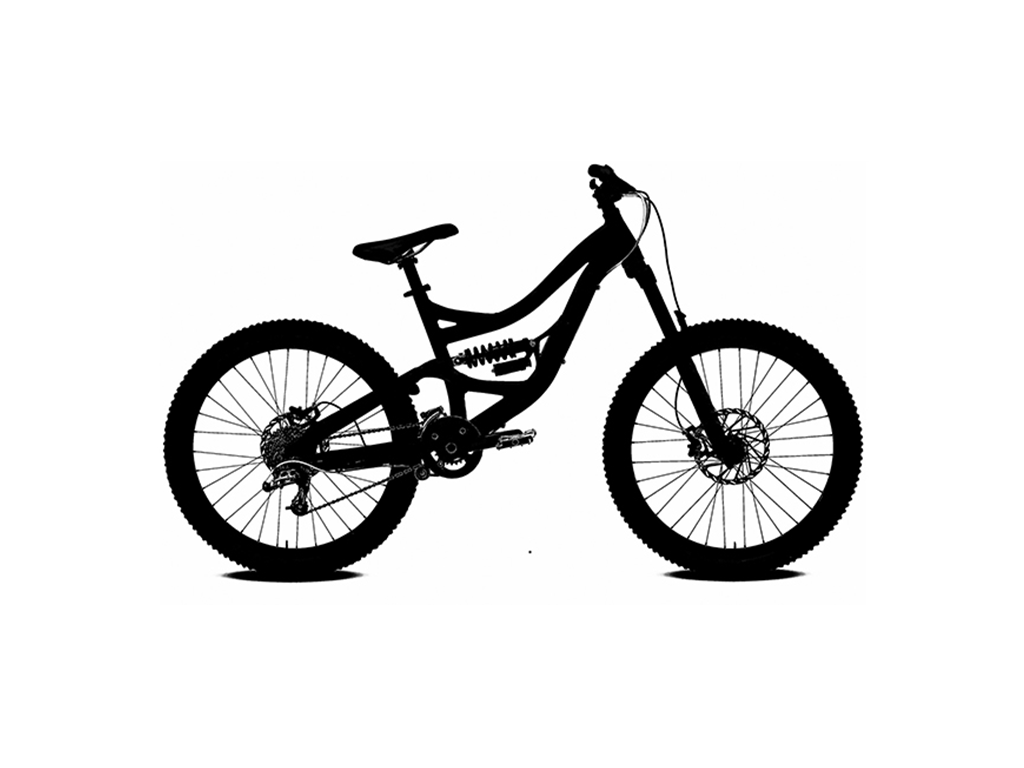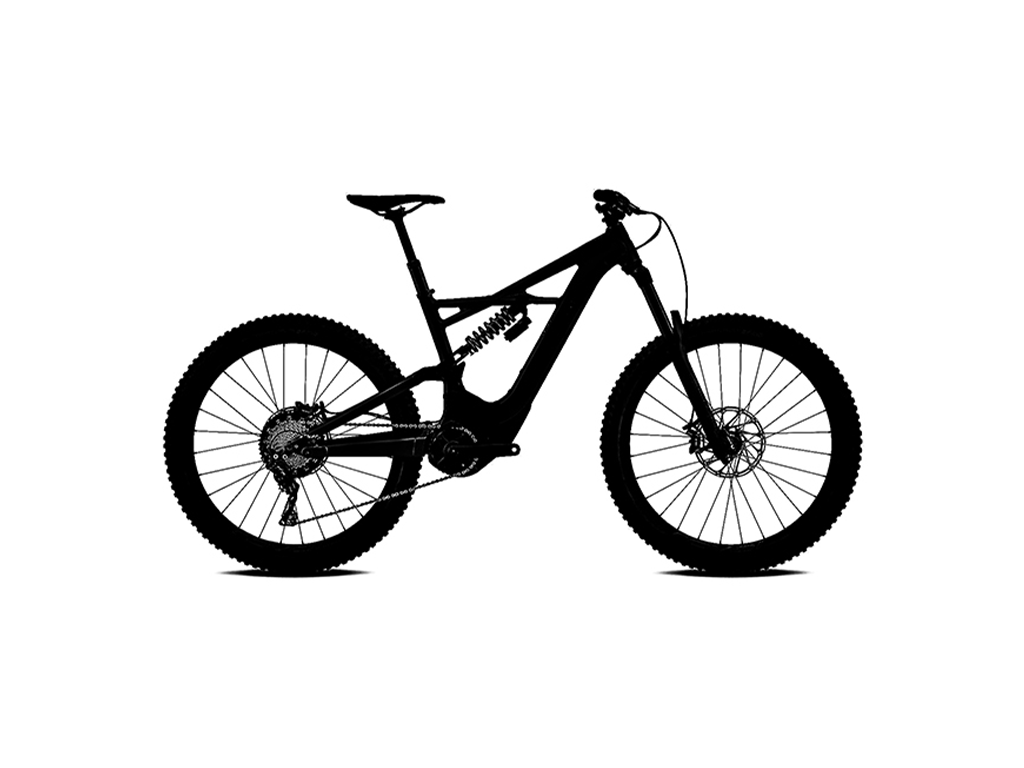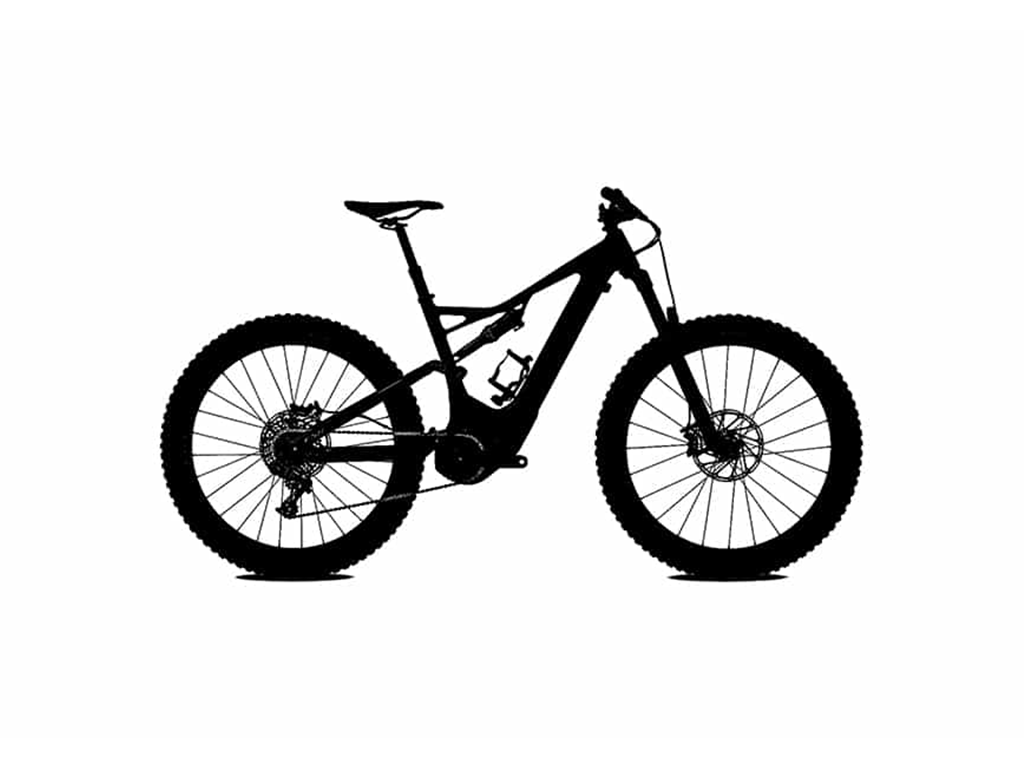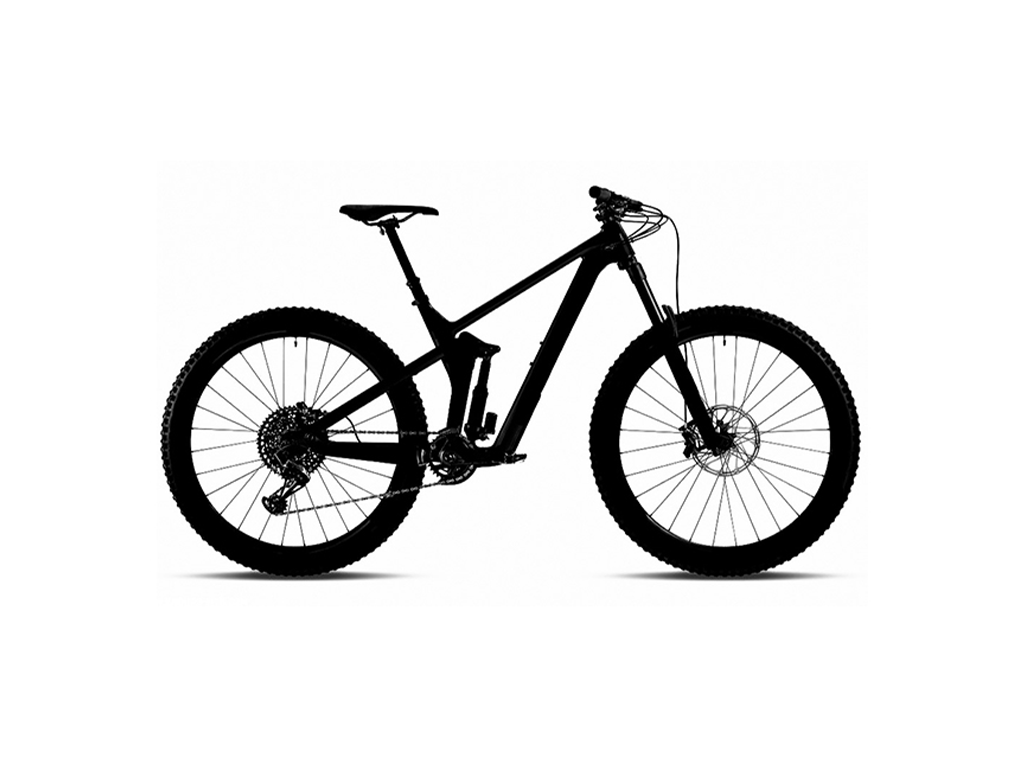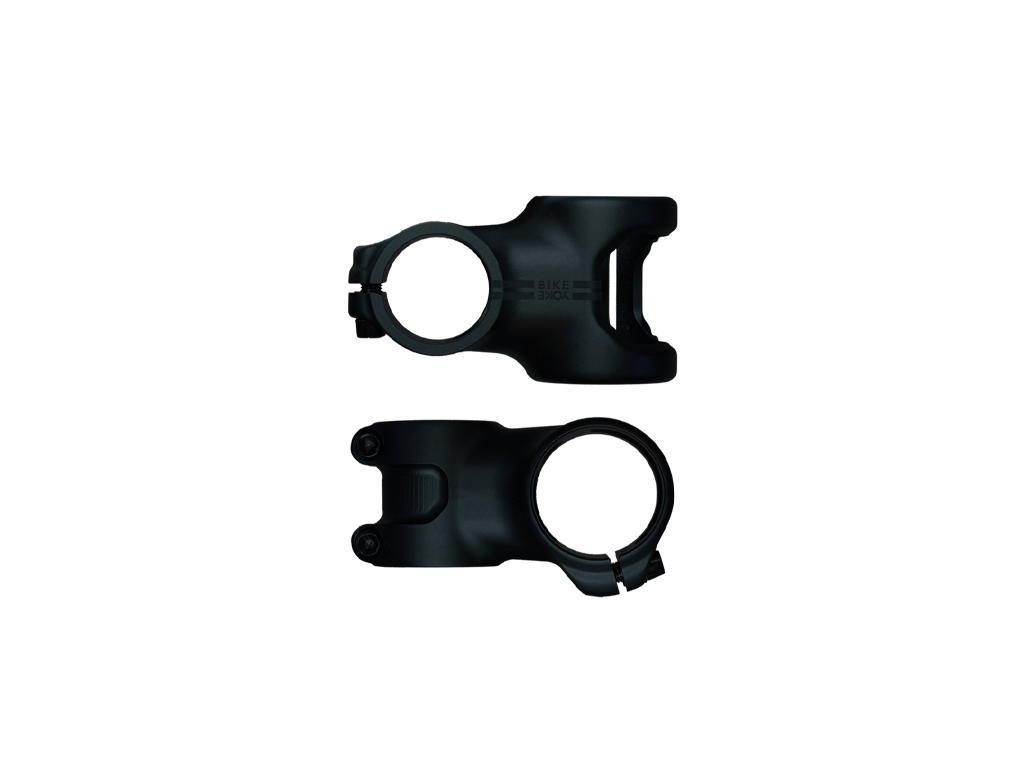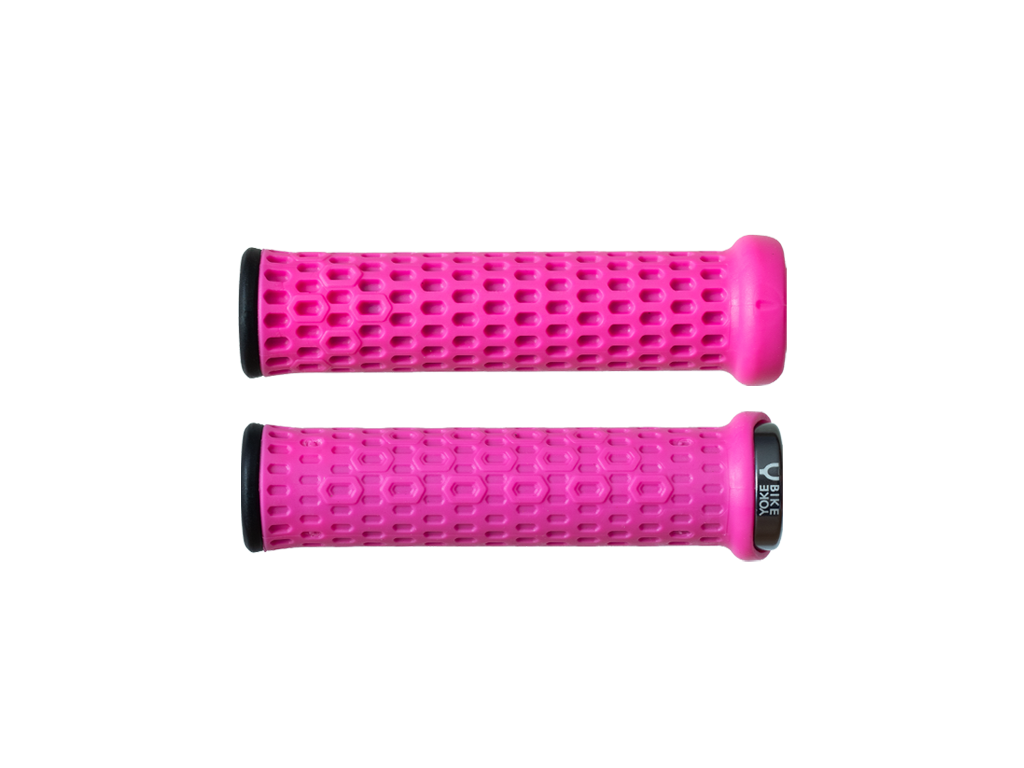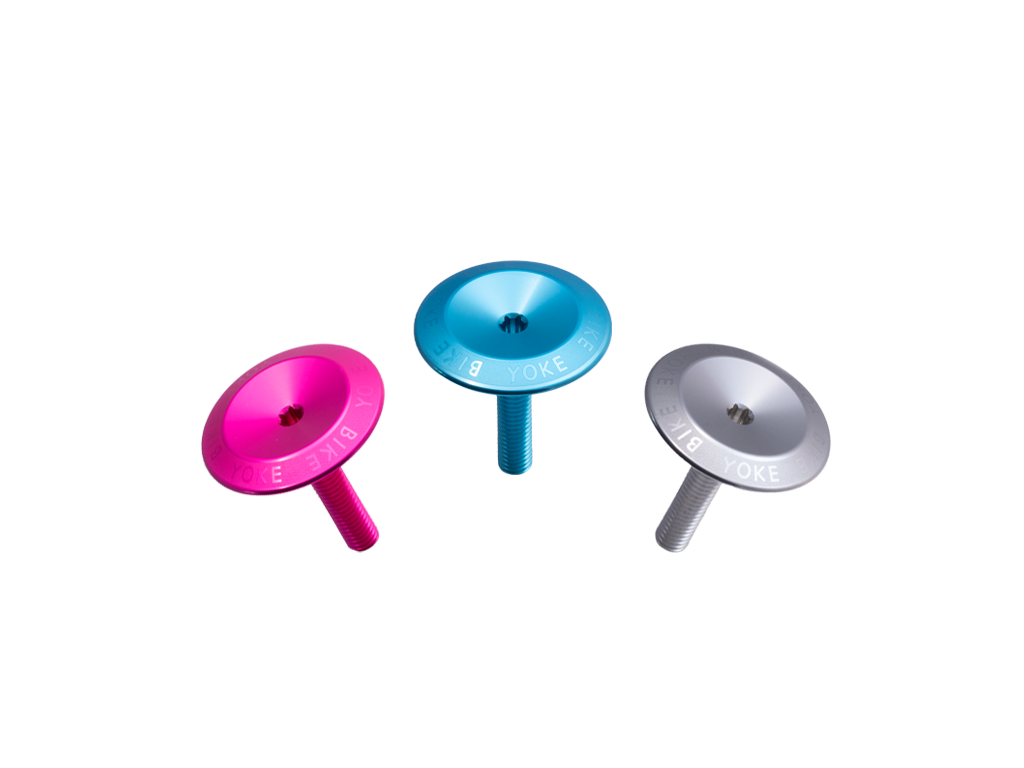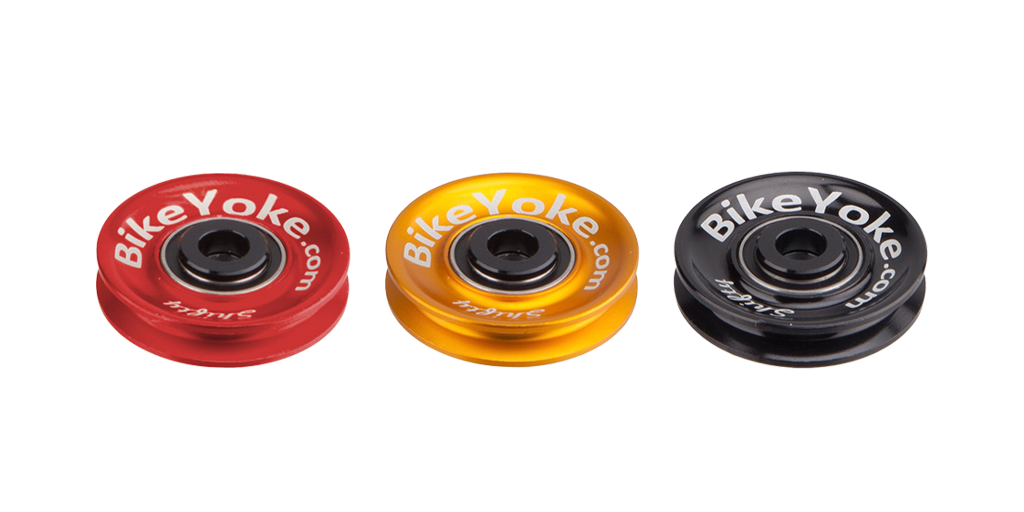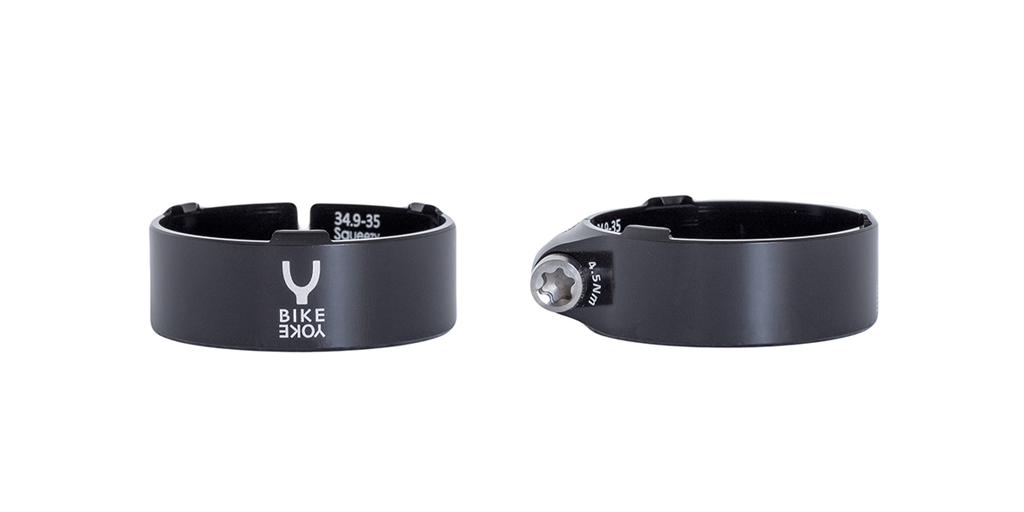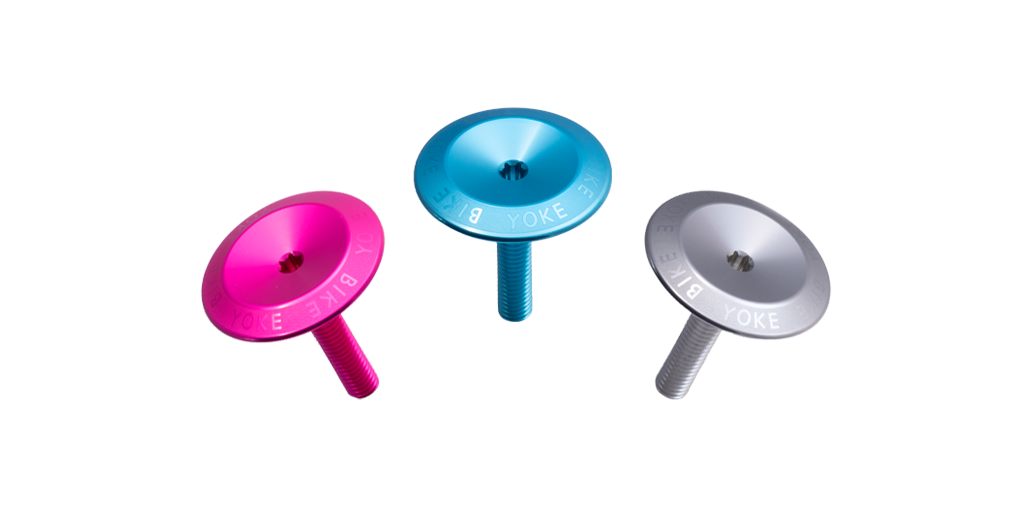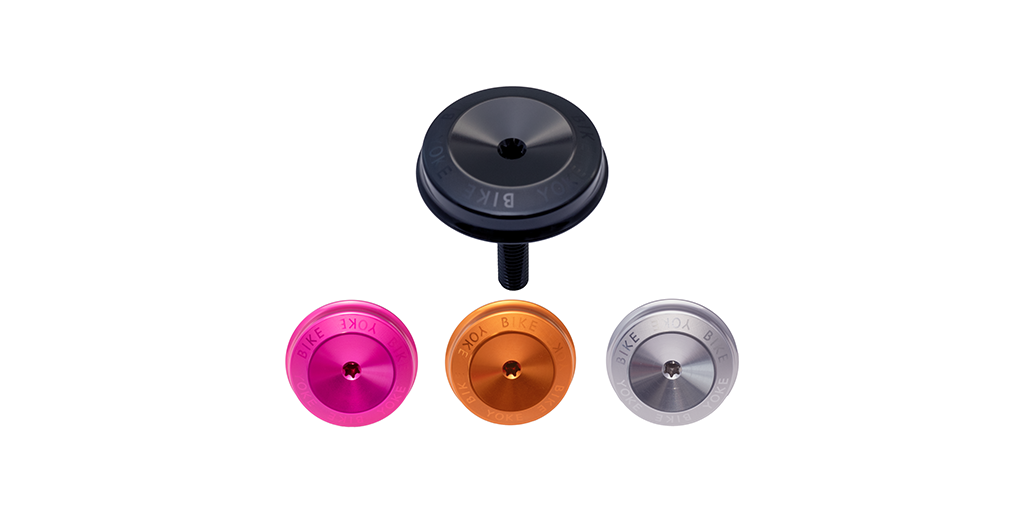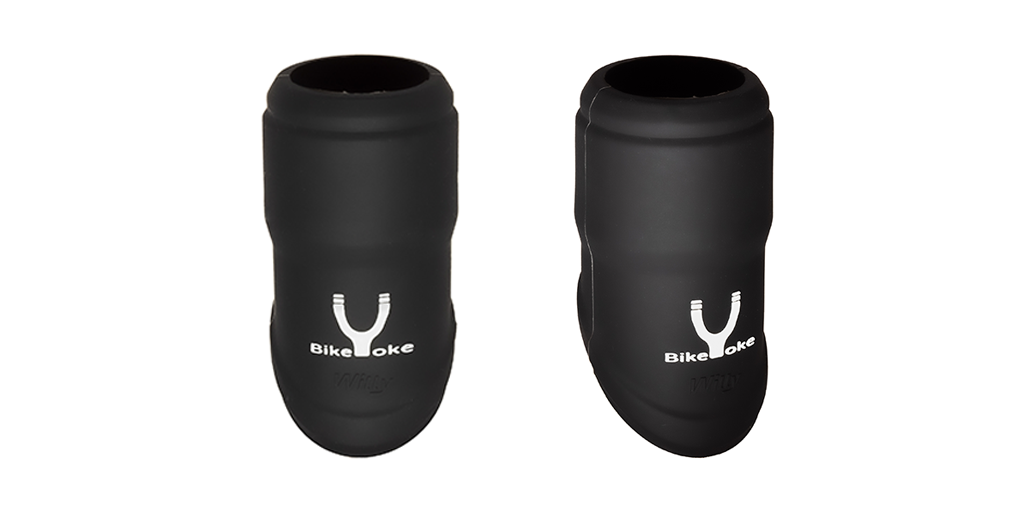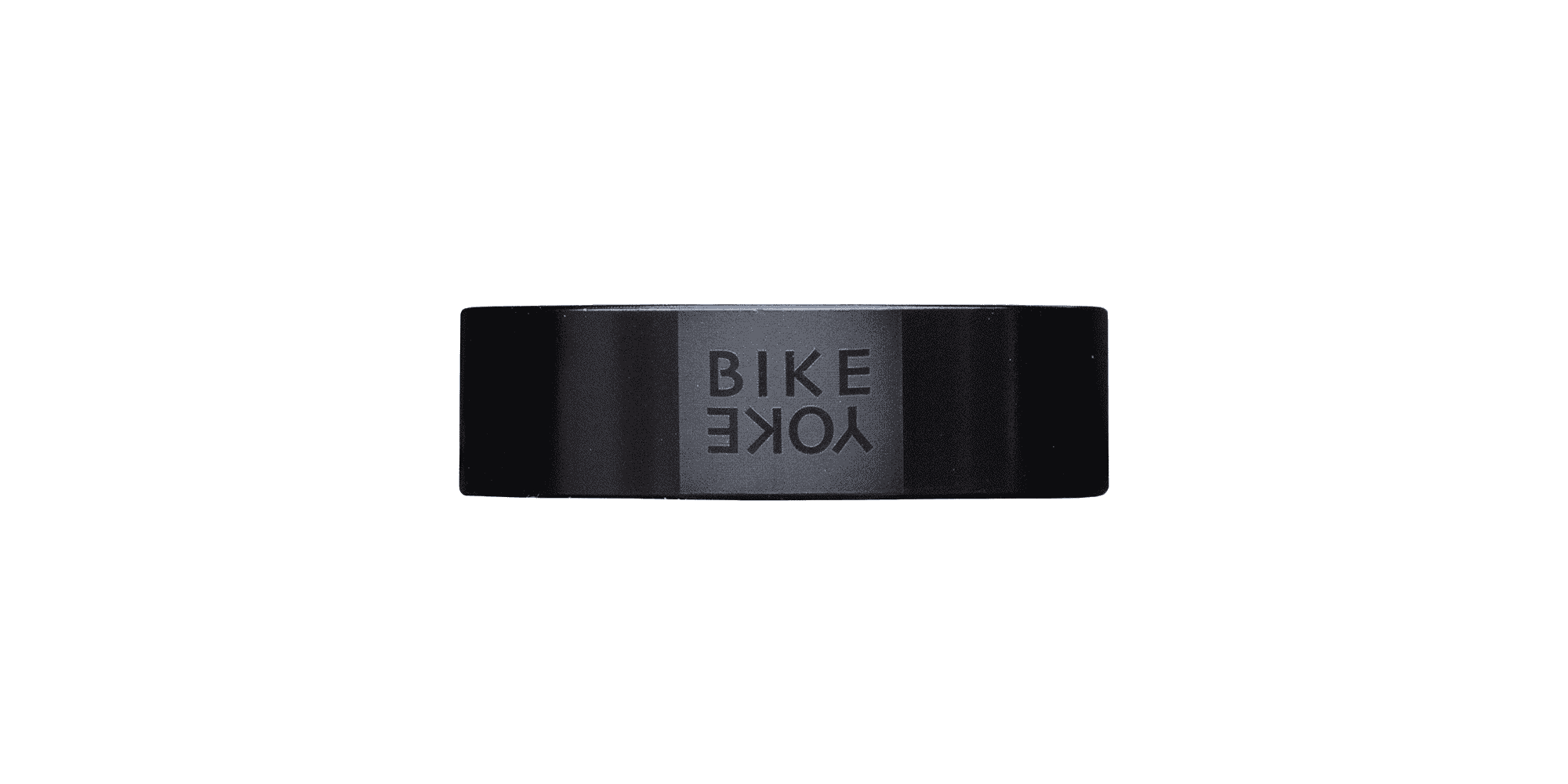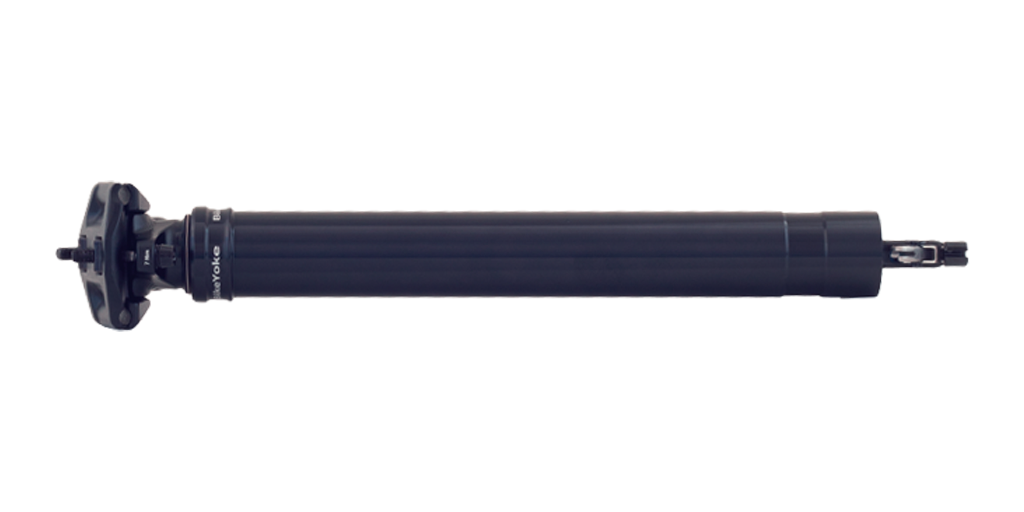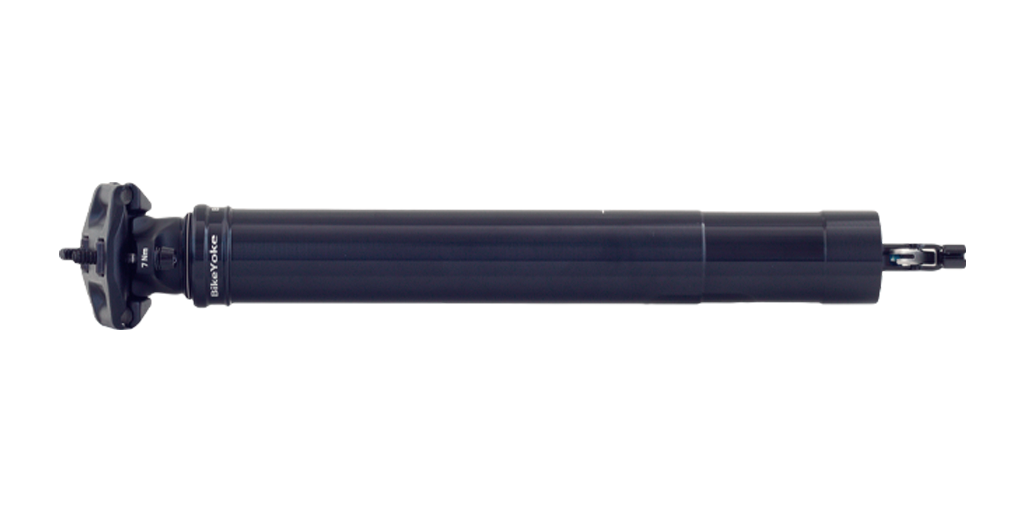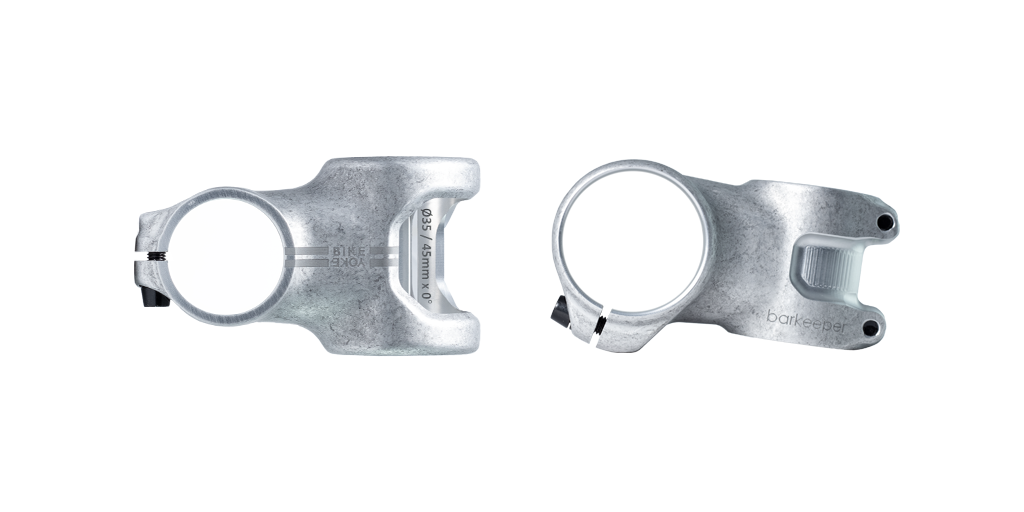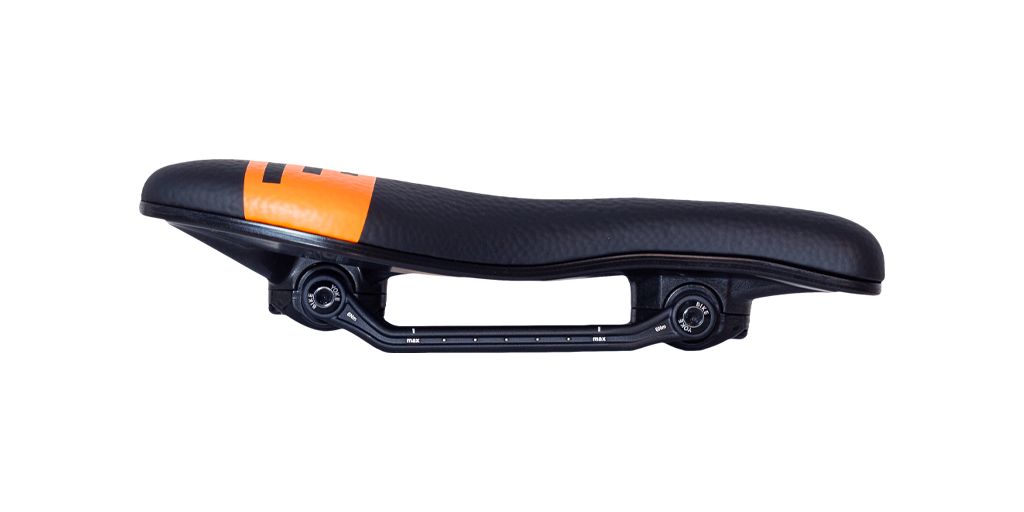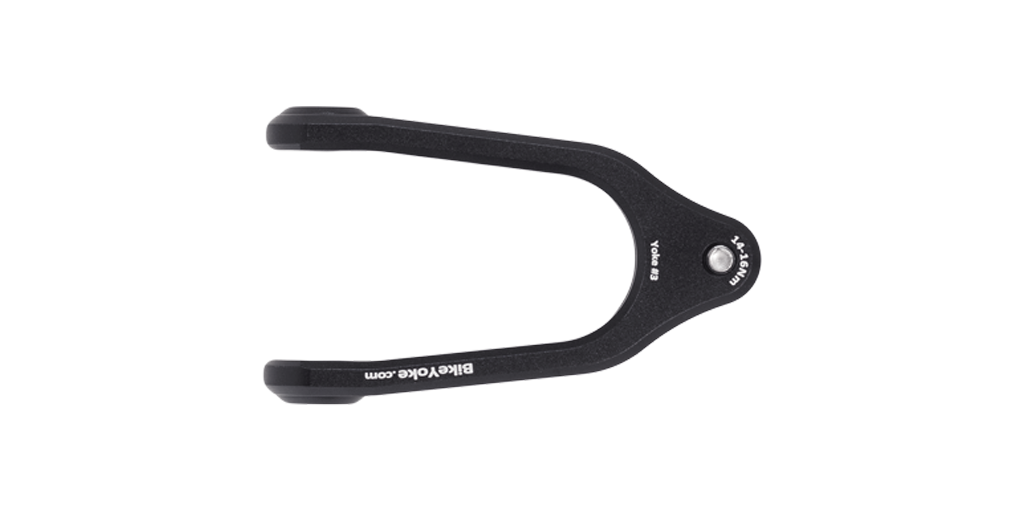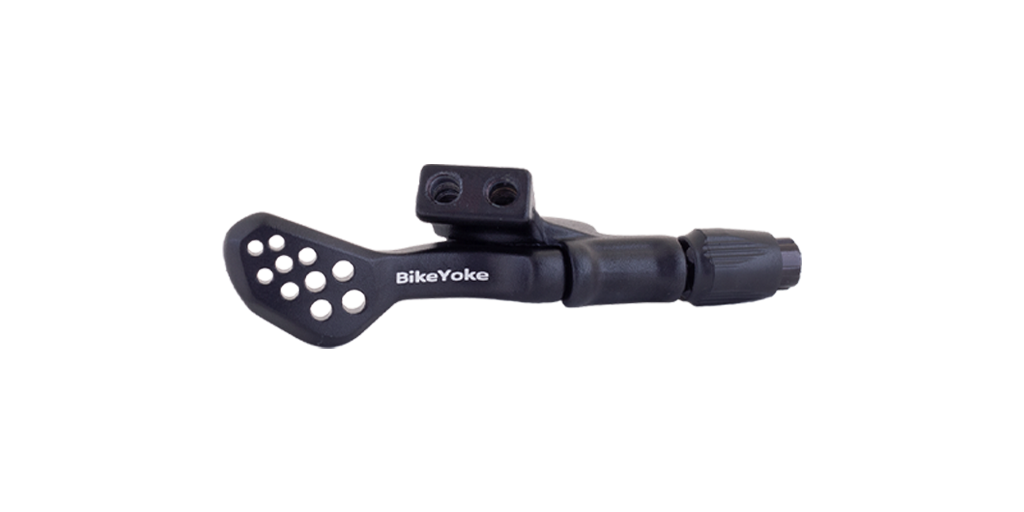travel reduction REVIVE
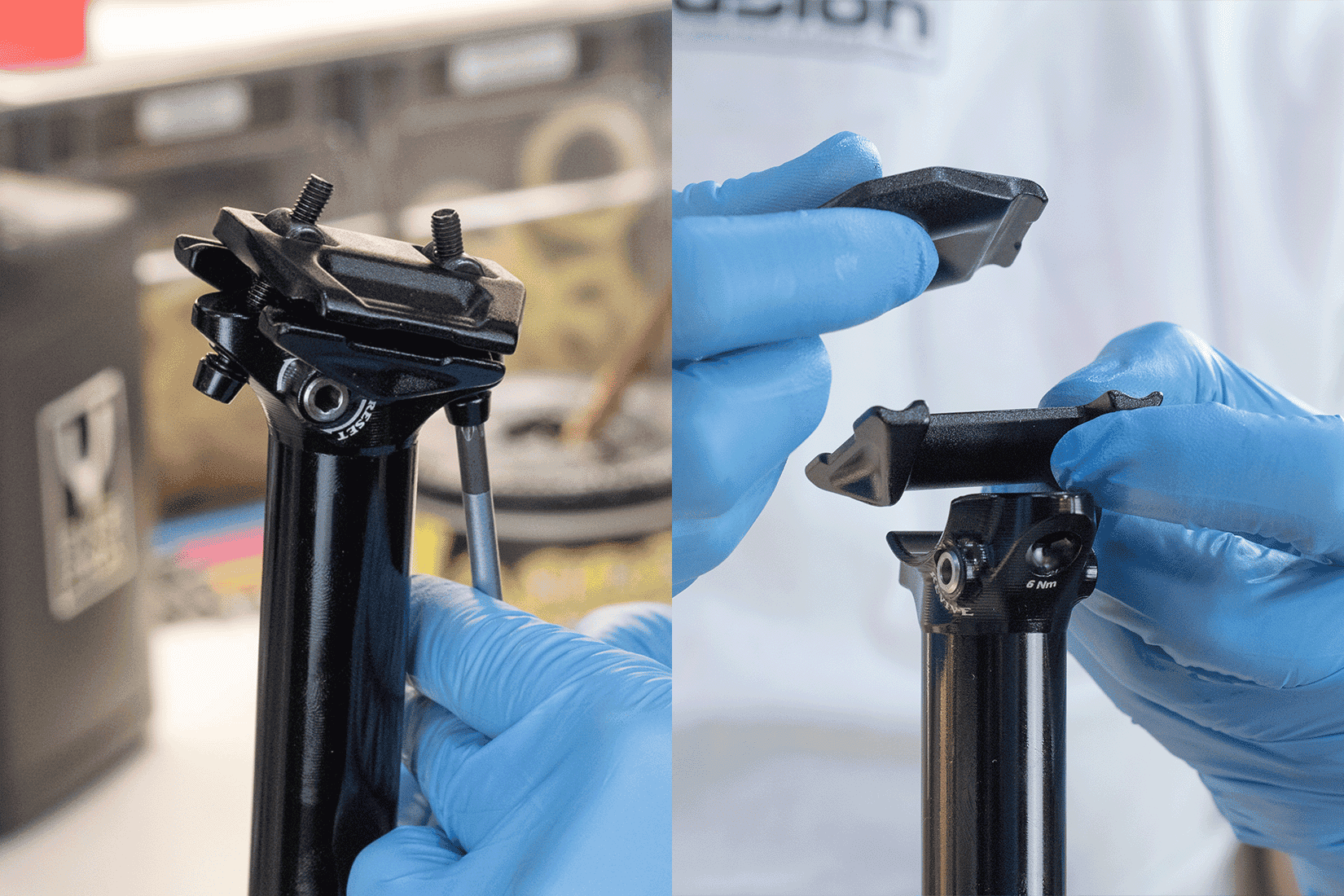
1.
Loosen the saddle clamping bolts (T25) and remove the two clamping plates and the saddle.
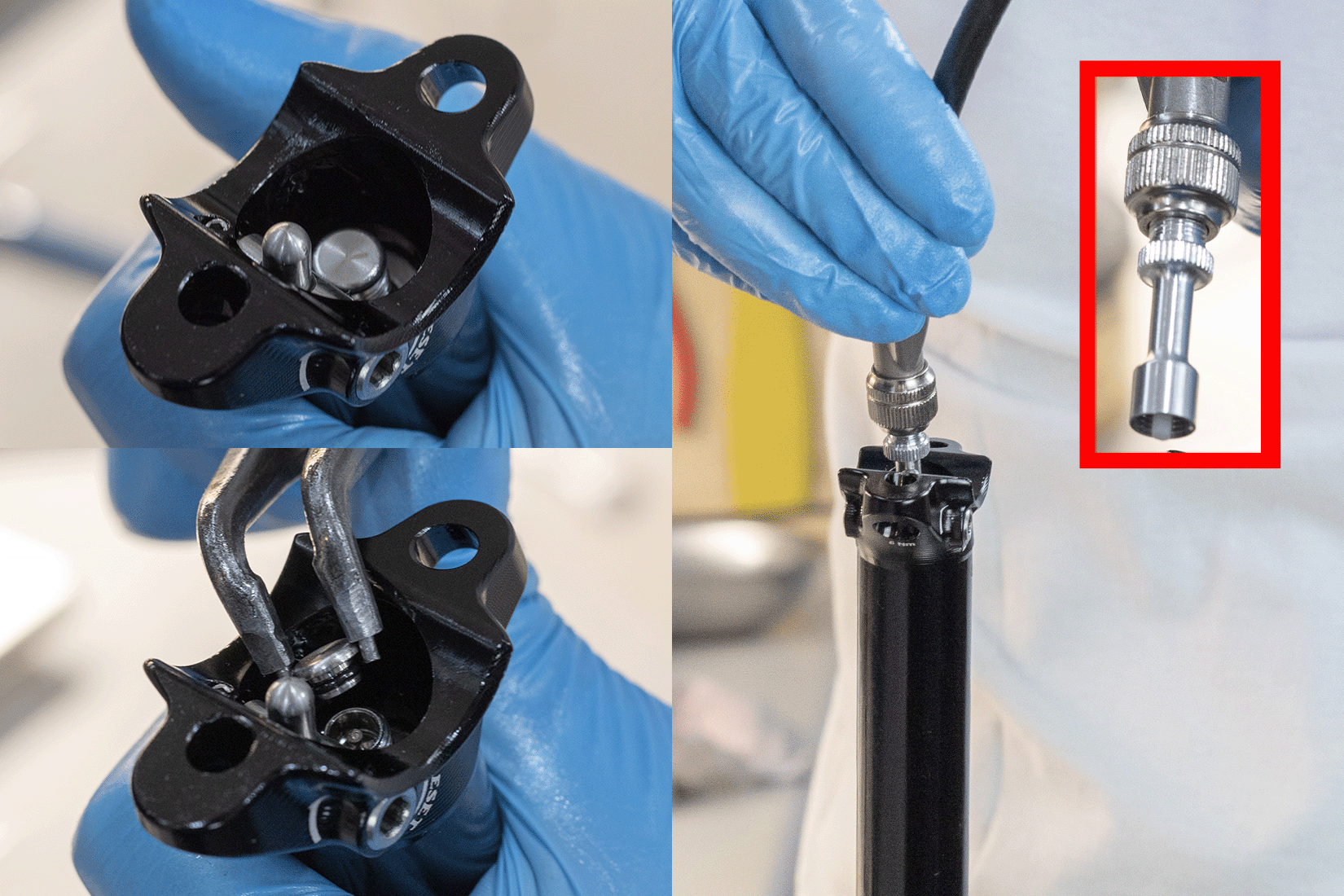
2.
Remove the valve cap.
IMPORTANT: Bring the seatpost into an upright (vertical) position and fully extend it before you attach a shock pump.
TIP: Use the REVIVE valve adapter to make it easier to connect the pump.
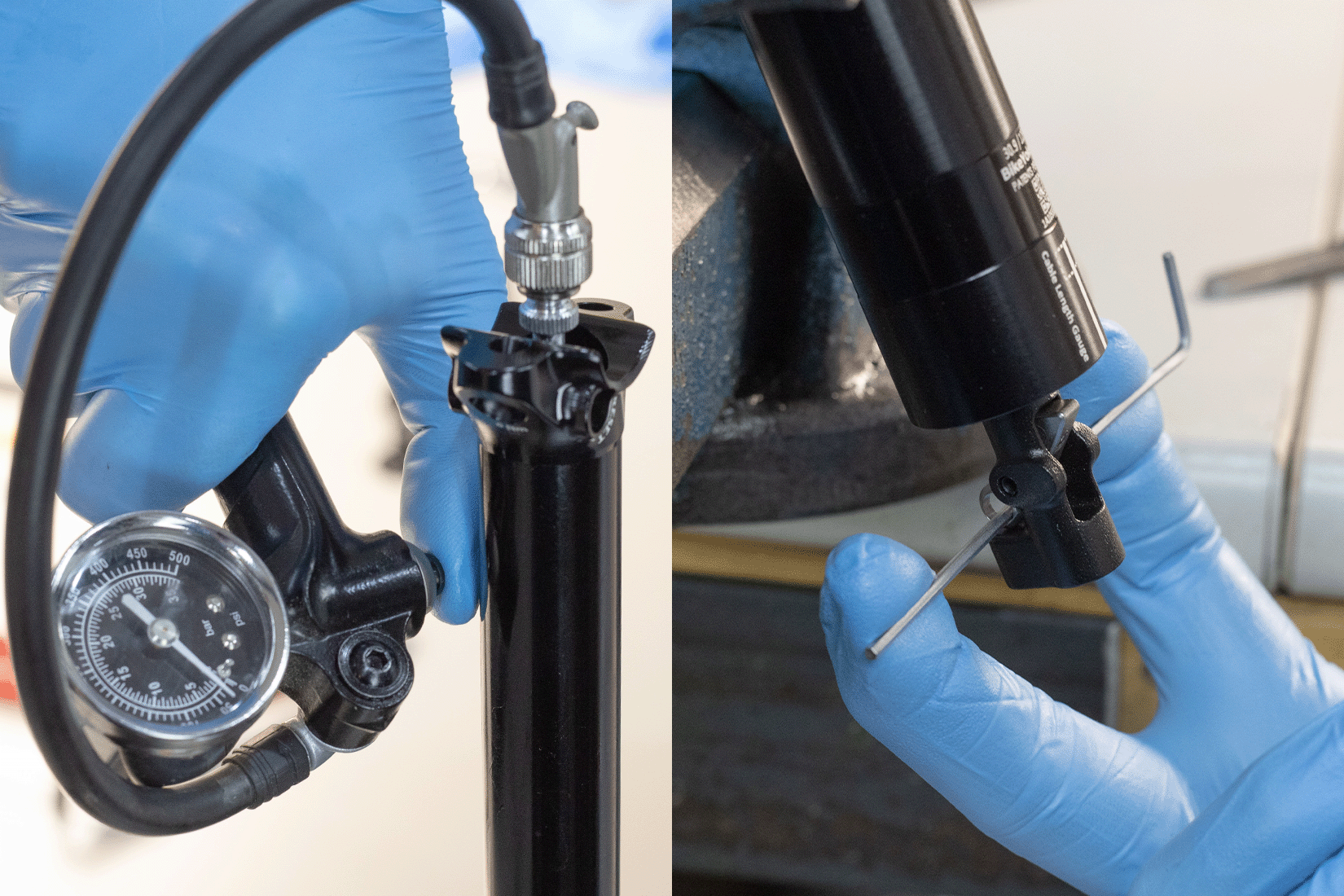
3.
Completely deflate the seatpost using the shock pump.
NOTE: When releasing air, occasionally actuate the actuator lever on the foot unit of the seatpost to ensure that the pressure is completely released.
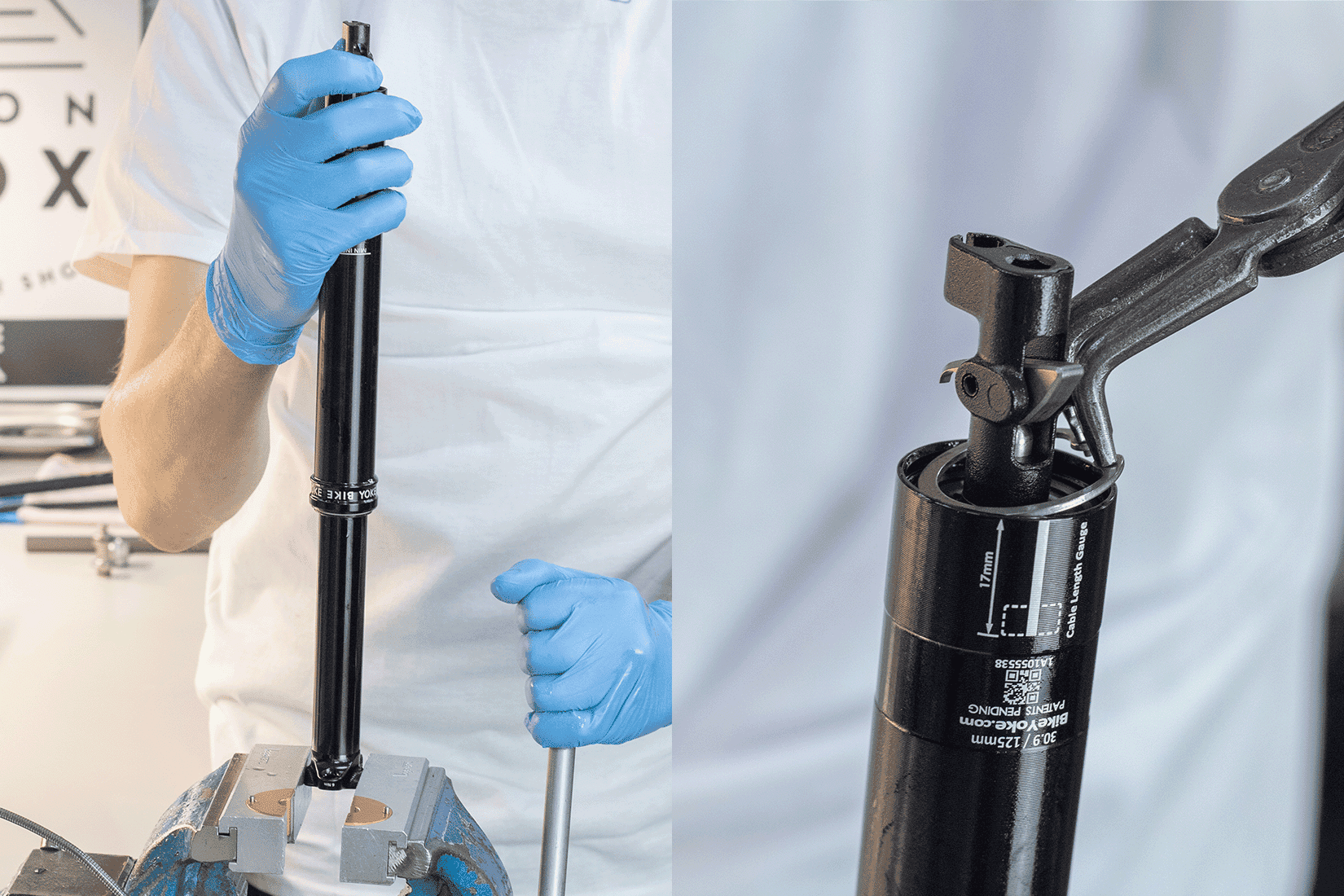
4.
Turn the seat post with the foot facing upwards and fix it with a suitable tool to make it easier to remove the retaining ring (DIN472 R28) then remove the retaining ring from the seat in the lower tube.
Tool recommendation: Knipex 48 21 J21 19-60 mm for inner rings
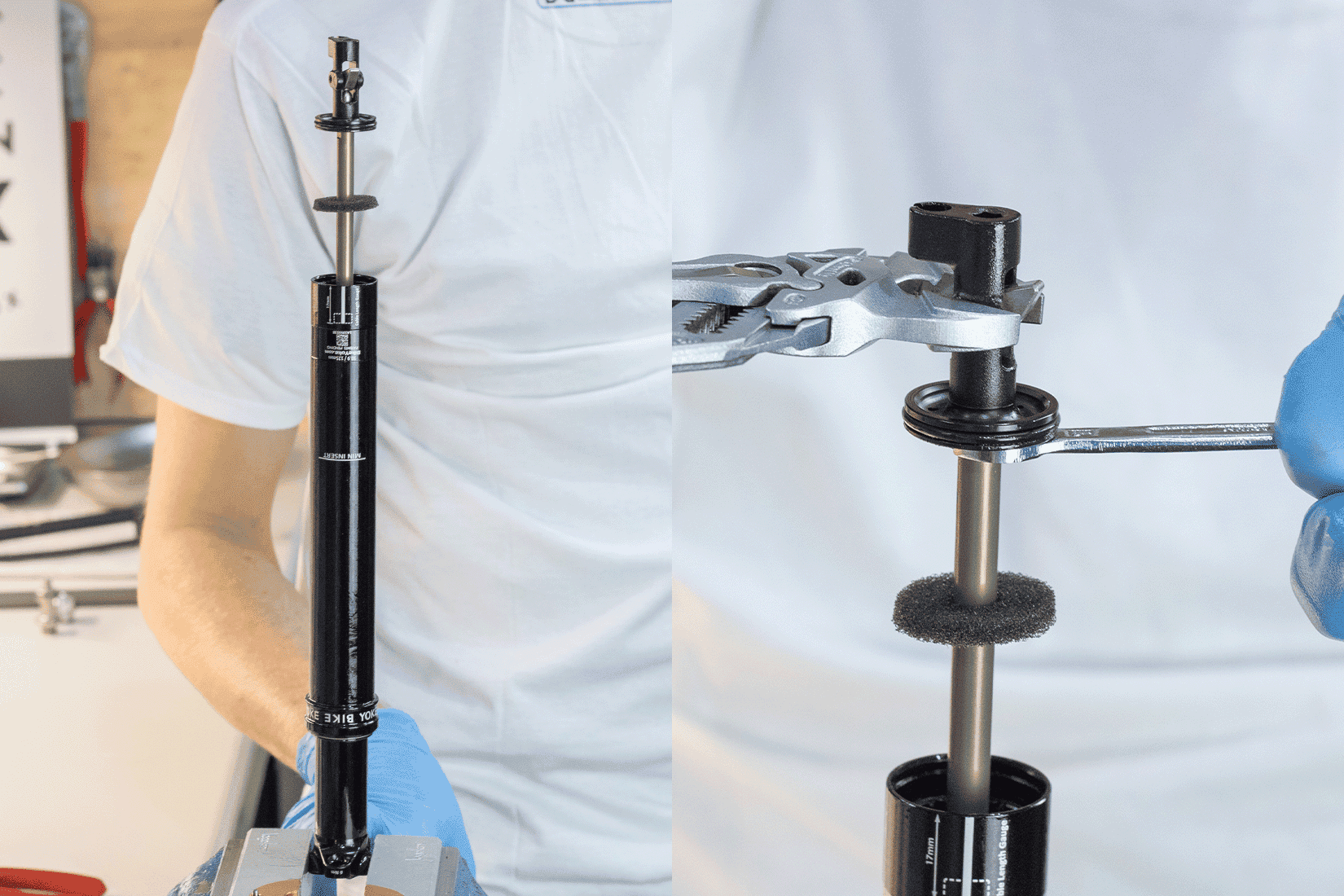
5.
Slide the lower tube towards the seatpost head and loosen the foot from the piston rod by turning it counterclockwise using a suitable 7 mm and 13 mm open-end wrench.
Tool tip: Knipex pliers wrench 86 03 125 and 86 03 180
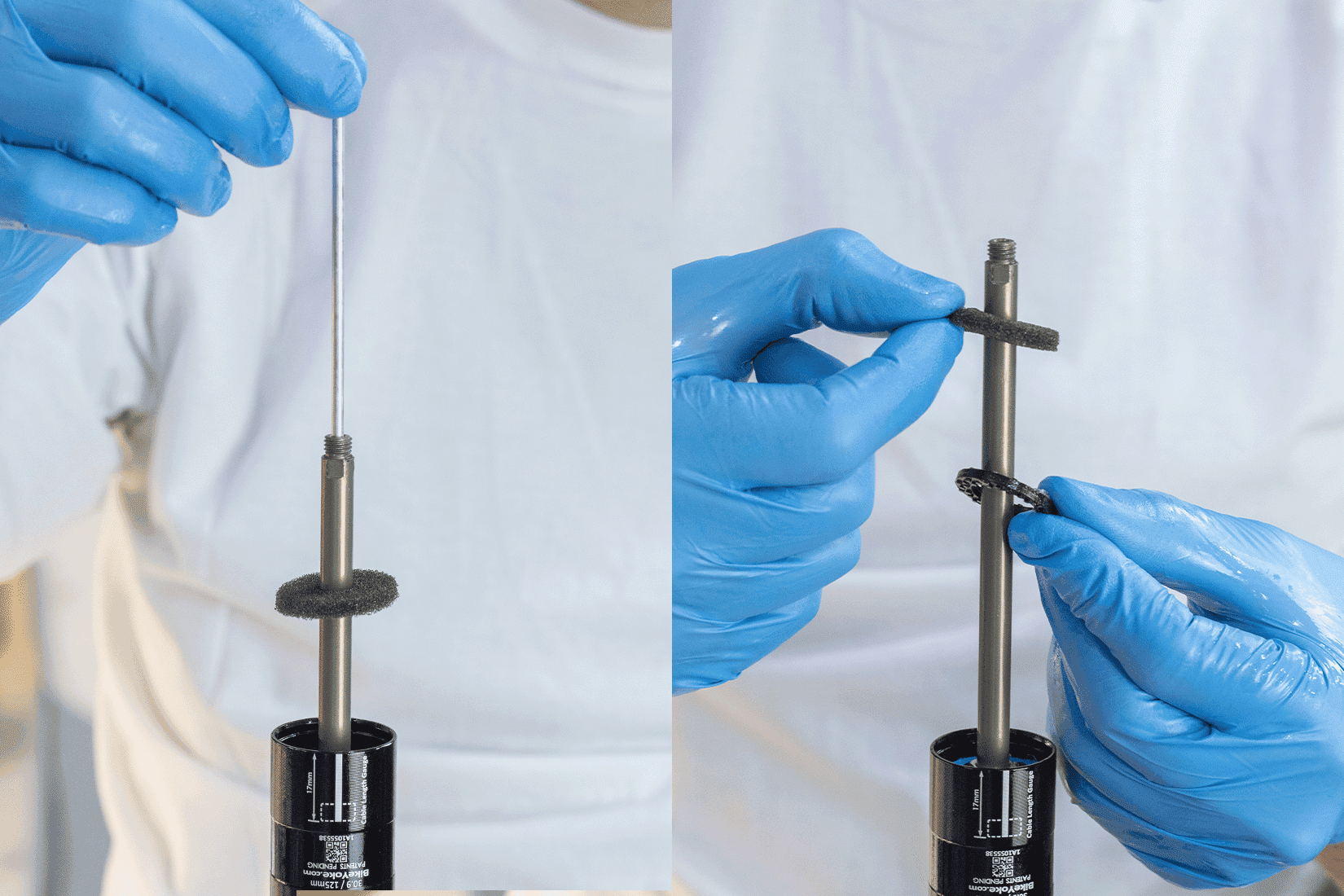
6.
Remove the actuator rod, the foam ring and the bottom out bumper.
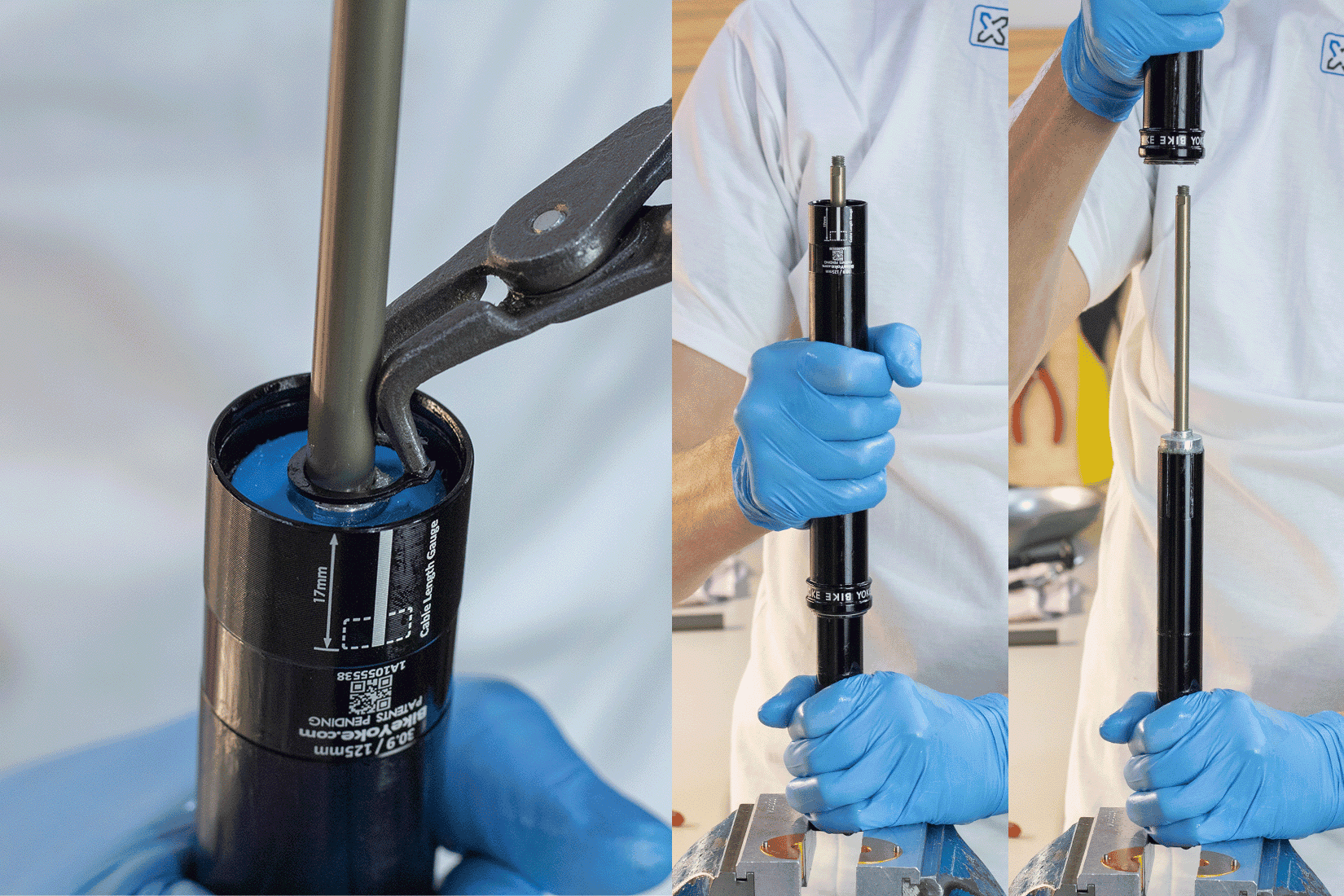
7.
Loosen the circlip (DIN471 S12) that secures the lower bushing. The lower tube can then be completely removed.
TIP: To protect the piston rod from damage, we recommend taping the area that the pliers may come into contact with.
Tool recommendation: Knipex 49 21 A11 10-25 mm for outer rings
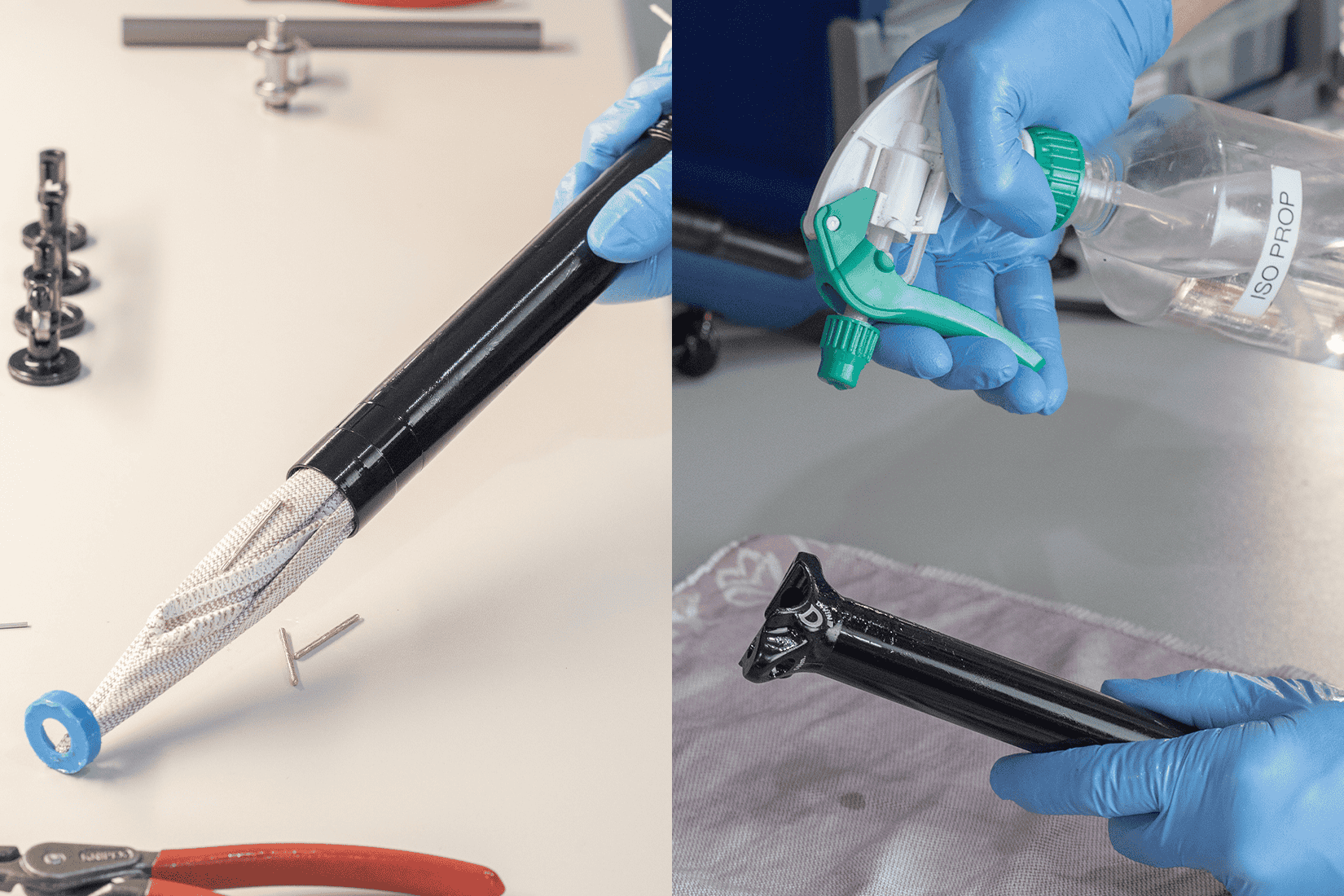
8.
Remove the bushing and the (remaining) guiding pins (6x) from the lower tube.
If parts are dirty, clean them thoroughly with a soft cloth and isopropanol.
NOTE: If a blue bushing is installed, it should not be reinstalled, but replaced with a new gray bushing, which is included in service kit #3.1.
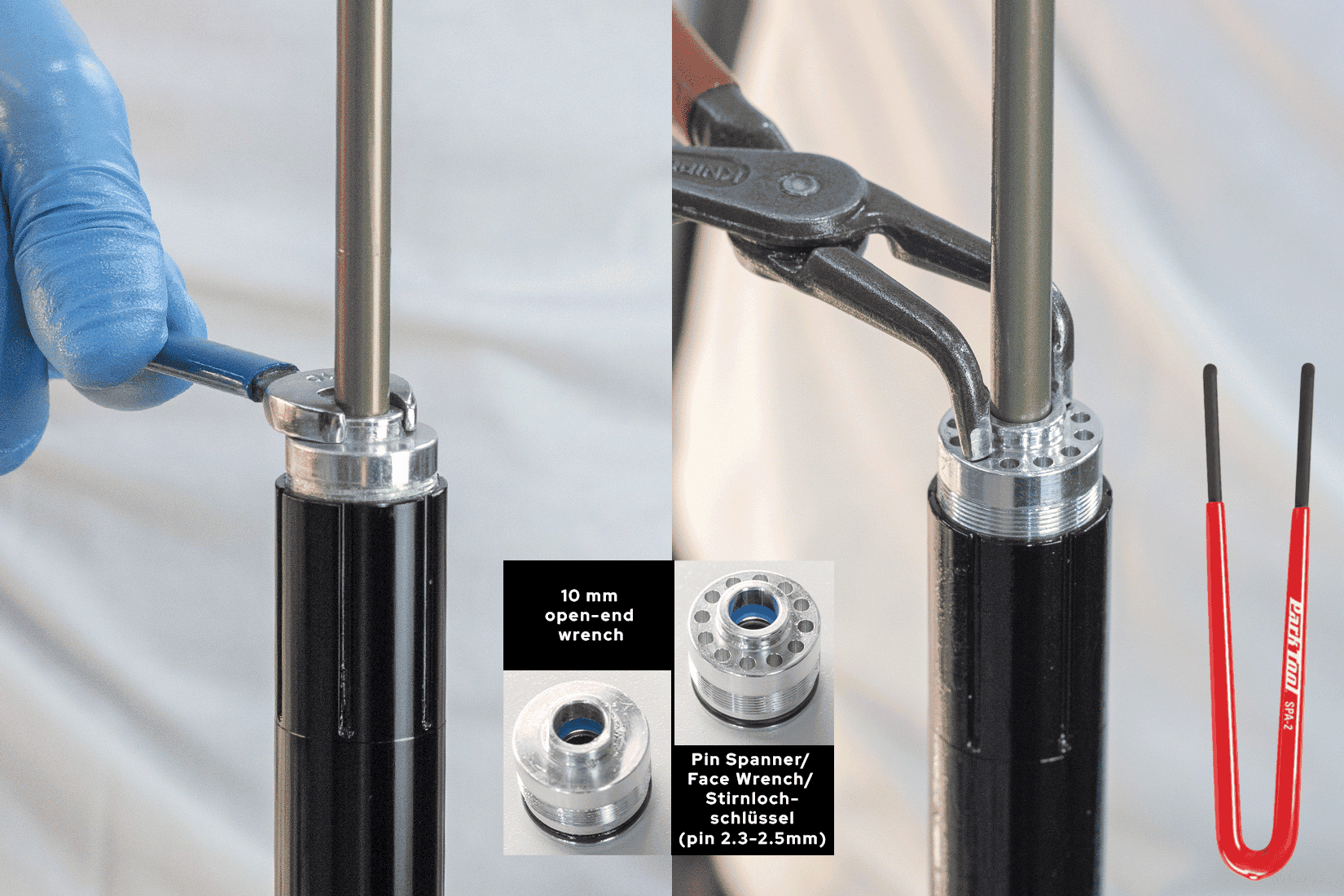
9.
Loosen the seal head with a 10 mm open-end wrench or a suitable face wrench (2.3 mm pin diameter), depending on the version of the seal head.
NOTE: Make sure that the upper tube is in an upright (vertical) position when loosening the seal head, otherwise oil loss may occur.
TIP: Instead of a face wrench, a suitable circlip pliers (e.g. Knipex 49 21 A11 10-25 mm) can be used.
Tool recommendation: Park Tool SPA-2 (face wrench / pin spanner)
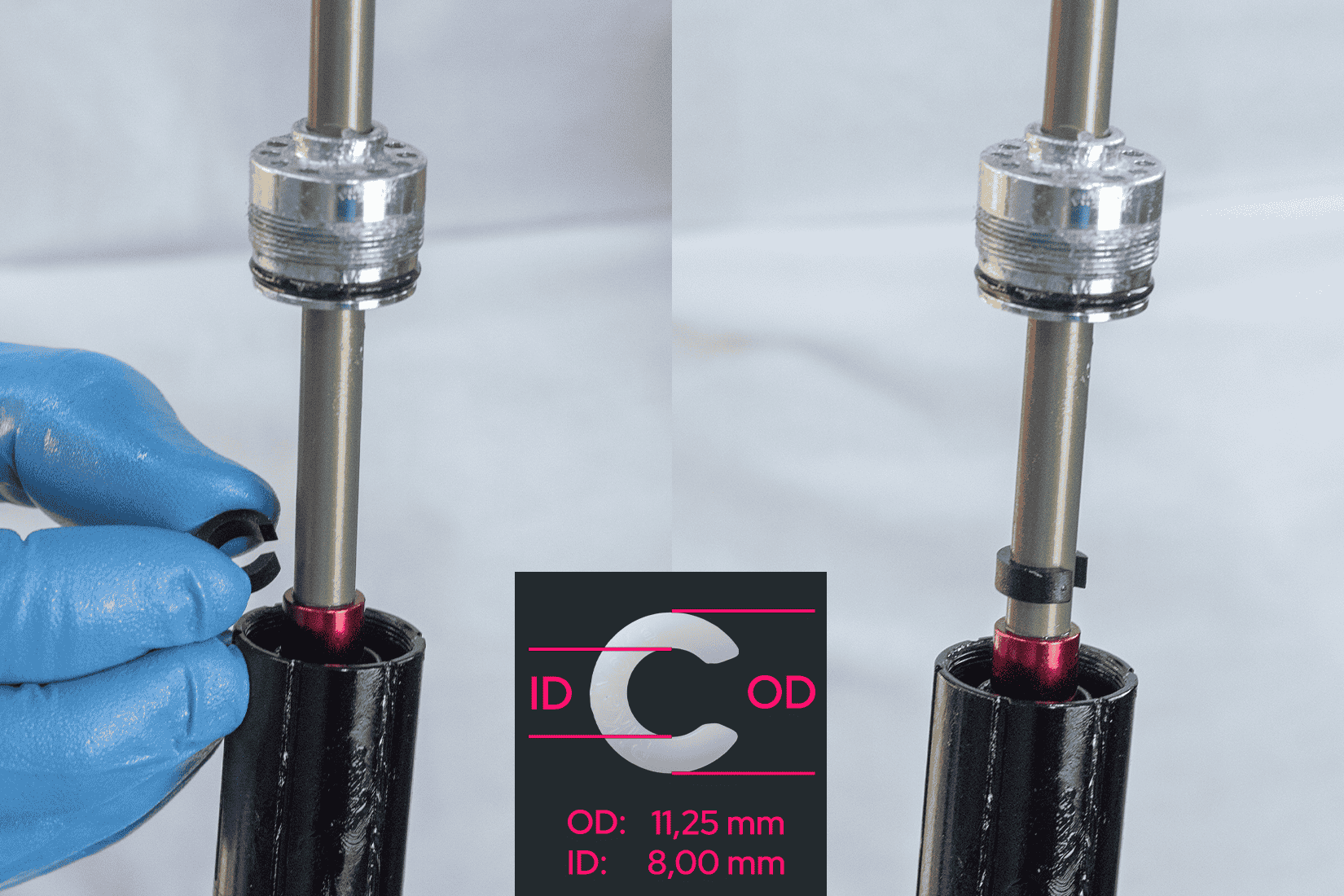
10.
Carefully push the seal head upwards and make sure that there is no oil leakage from the seatpost. When the piston rod is exposed, you can attach the desired number of spacers (5 mm each) between the seal head and the main piston on the piston rod.
NOTE: The number of spacers is not limited, but we recommend reducing the oil quantity (oil and pressure specifications) slightly (-0.5 ml per spacer) if there are more than 4 spacers.

11.
Push the seal head back onto the upper tube and tighten it (4 Nm) using a 10 mm open-end wrench or a face wrench (2.3 mm pin diameter).
TIP: Instead of a face wrench, a suitable circlip pliers (e.g. Knipex 49 21 A11 10-25 mm) can be used.
Tool recommendation: Park Tool SPA-2 (face wrench / pin spanner)
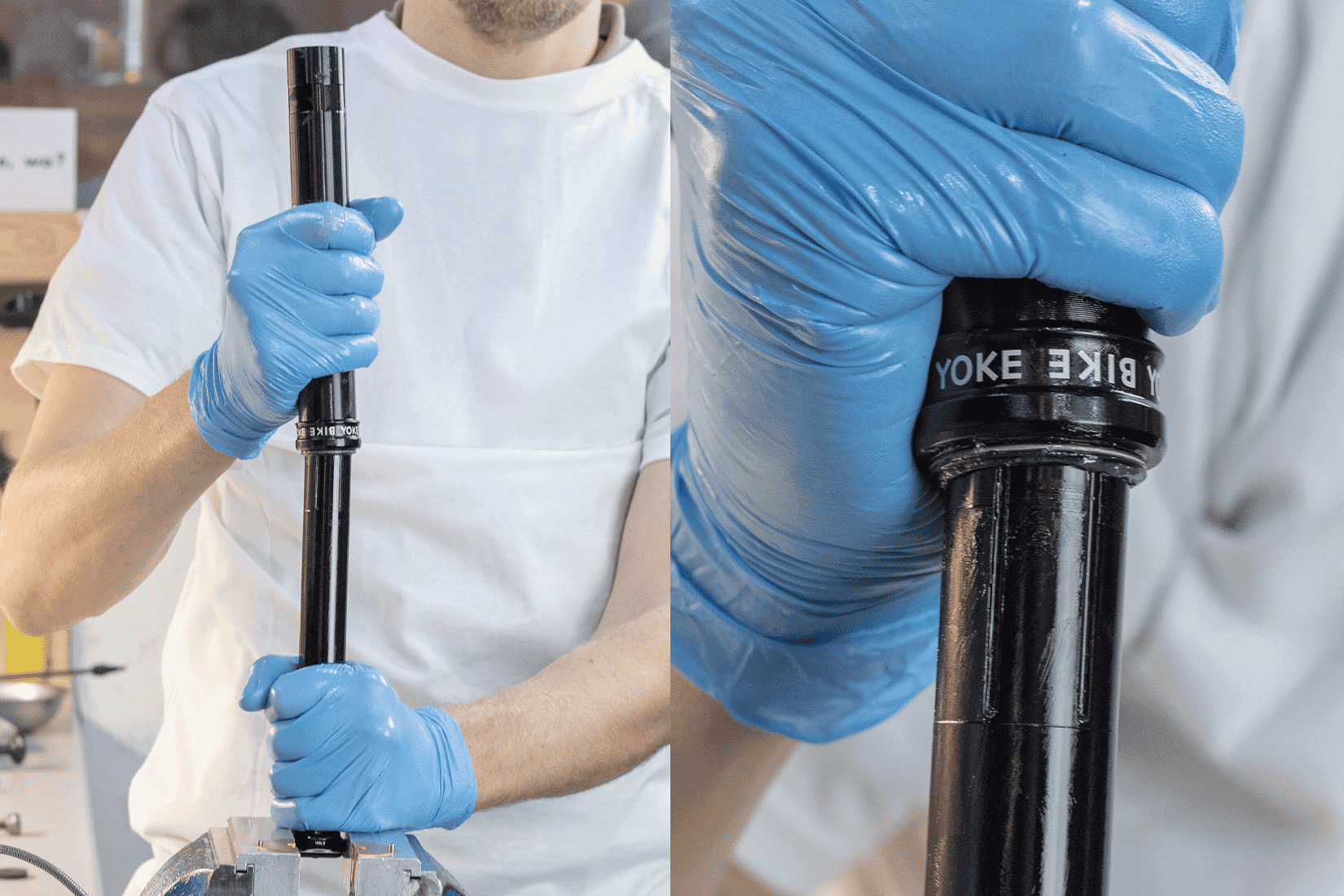
12.
Then carefully slip the lower tube over the upper tube with the wiper facing towards the front and push it all the way back onto the upper tube.
NOTE: The wiper, the seats of the guide pins on the upper tube and the milling grooves inside the lower tube should be clean and sufficiently greased before assembly.
TIP: For easier installation and to avoid damaging the wiper, it should be slid over the upper tube with a careful tilting movement.
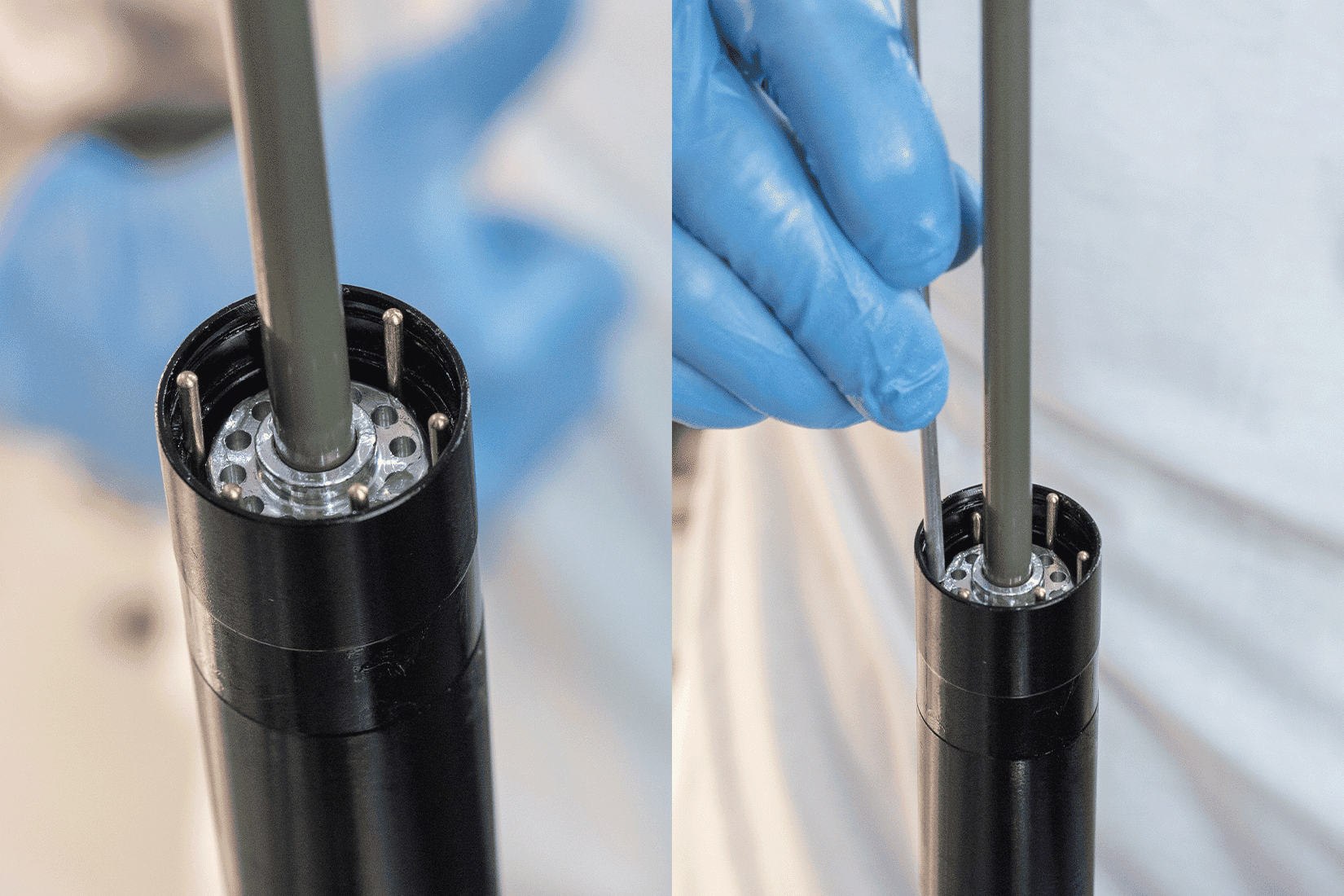
13.
Now insert the 6 guide pins completely into the intended positions between the upper and lower tube.
TIP: Turn the lower tube until the pins can be inserted without much resistance. The actuator rod can also be used as a tool to push the pins in as far as possible.
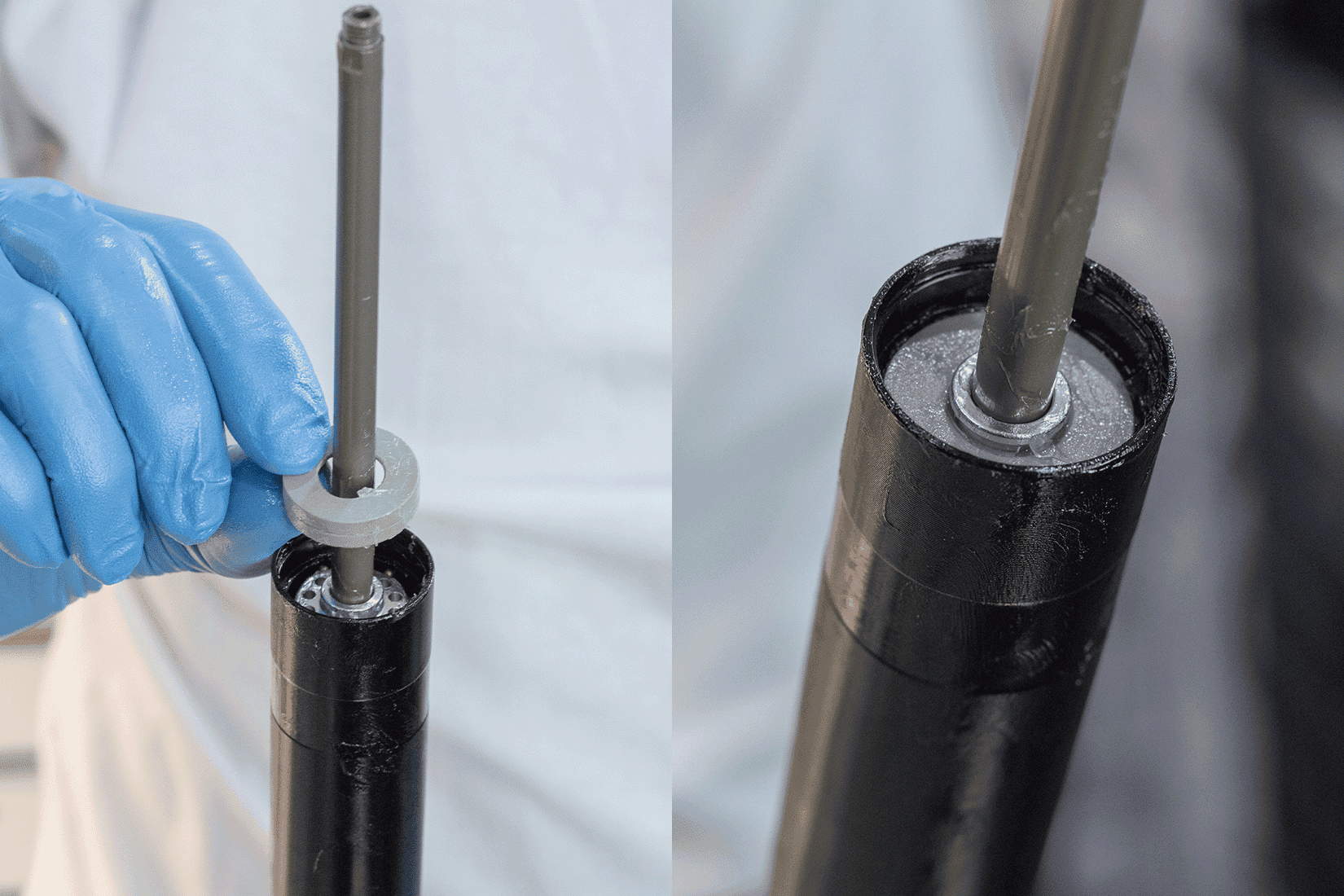
14.
Place the lower bushing over the piston rod and press it fully onto the seal head until the seat for the circlip (DIN471 S12) is fully exposed.
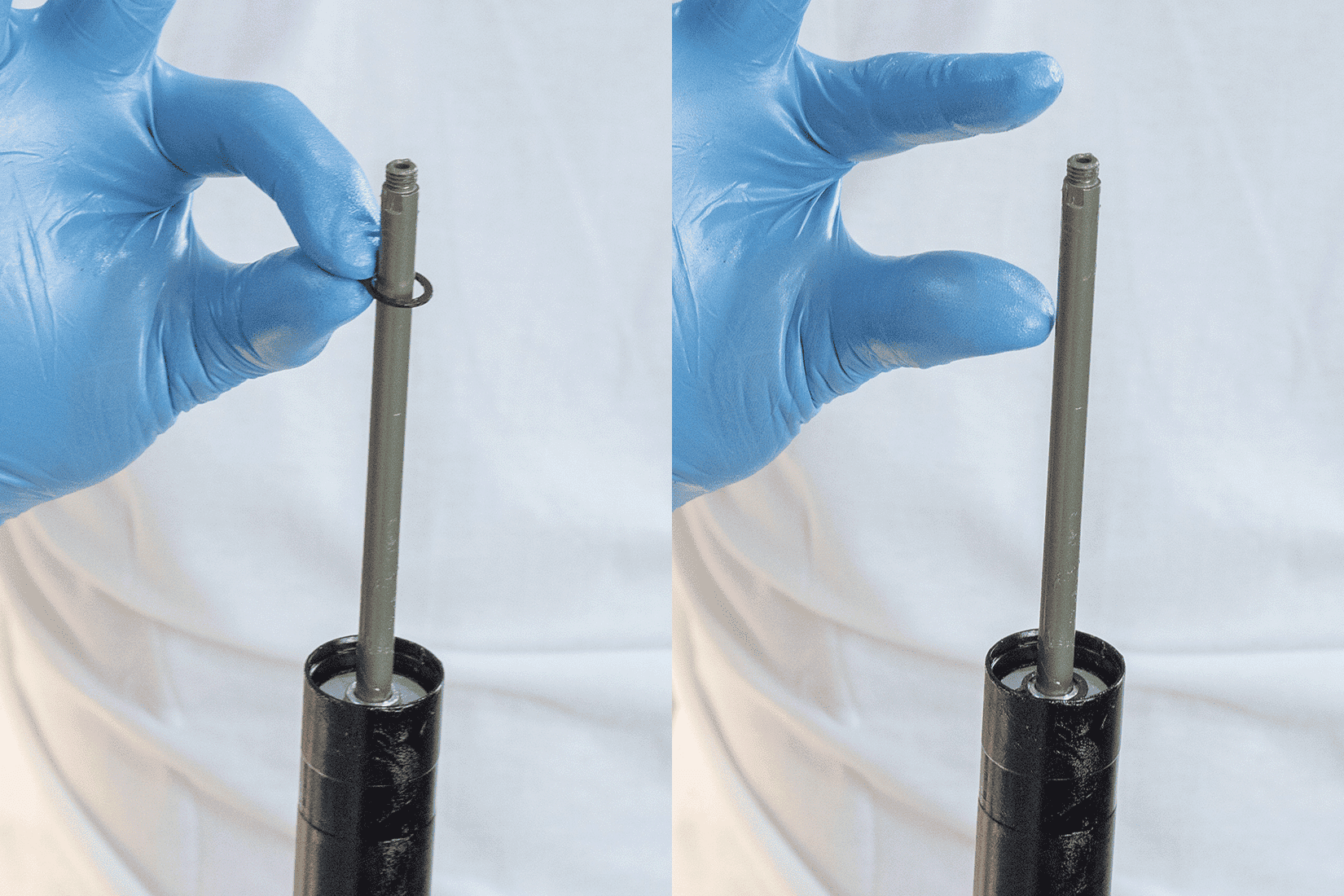
15.
Slide the circlip (DIN471 S12) onto the piston rod.
TIP: To avoid damaging the piston rod, we recommend simply letting the retaining ring drop down as shown in the picture.
NOTE: Circlips usually have one side with sharp edges and one side with rounded edges. In this case, the side with the sharp edge should point towards the foot unit.
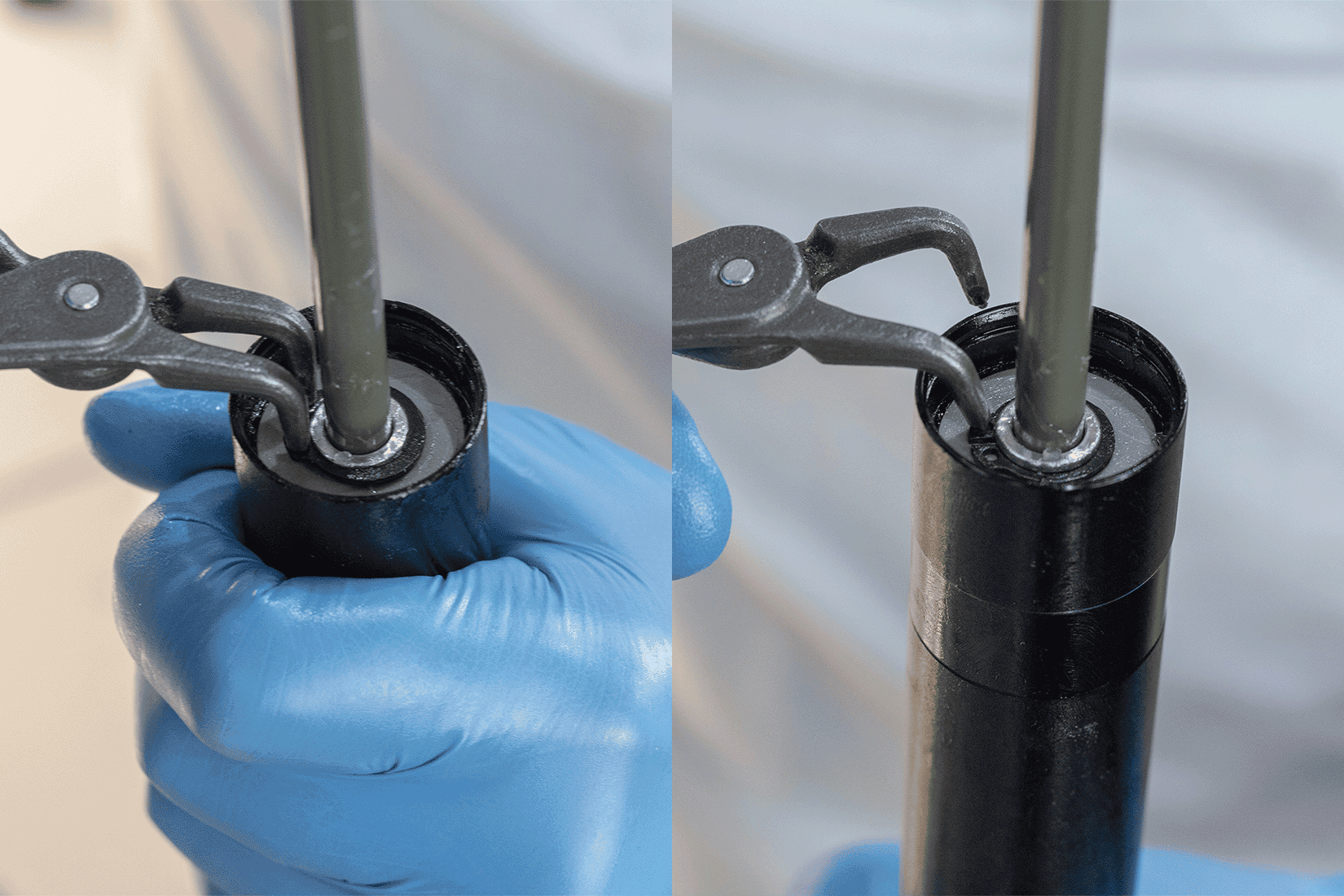
13.
Secure the lower bushing with the circlip (DIN471 S12) and ensure that the circlip is correctly and fully seated.
NOTE: Twist the circlip with one of the pins of the circlip pliers to check again that it is correctly and fully seated.
TIP: To protect the piston rod from damage, we recommend taping the area that the pliers may come into contact with.
Tool recommendation: Knipex 49 21 A11 10-25 mm for outer rings
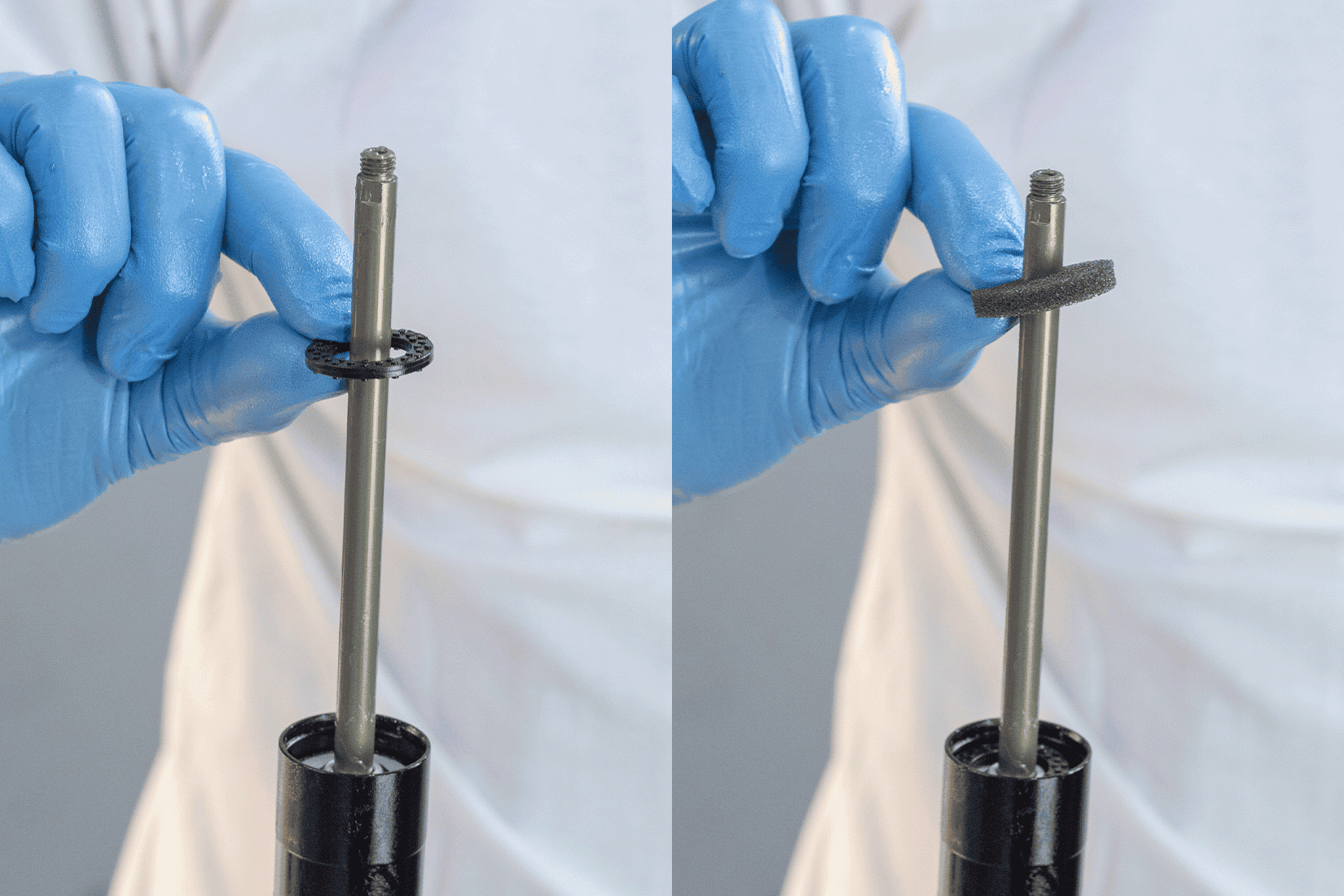
17.
Slide the bottom-out-bumper and then the foam ring onto the piston rod.
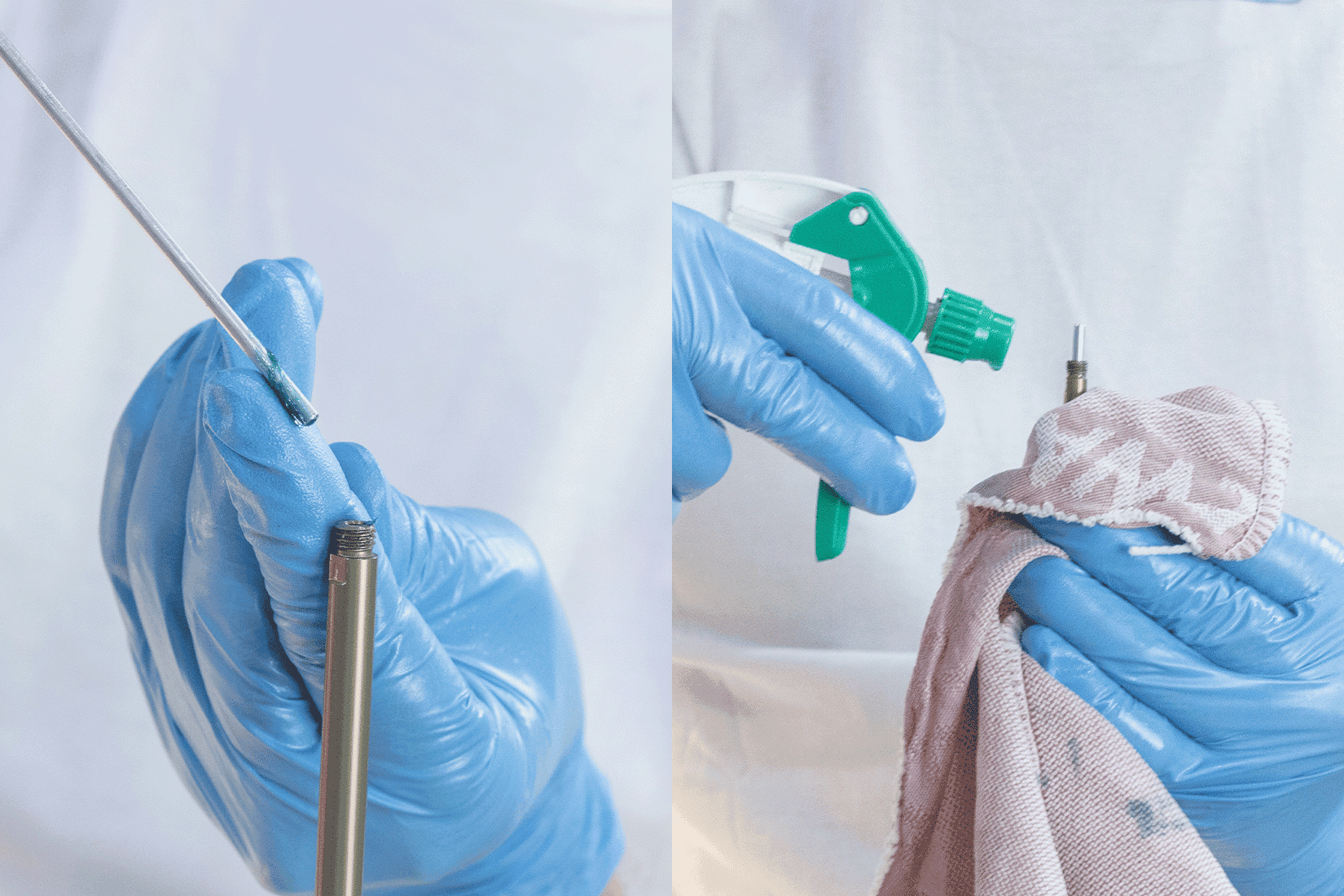
18.
Push the lightly greased actuator rod back into the piston rod and clean the thread of the piston rod thoroughly with isopropanol and remove all grease residues.
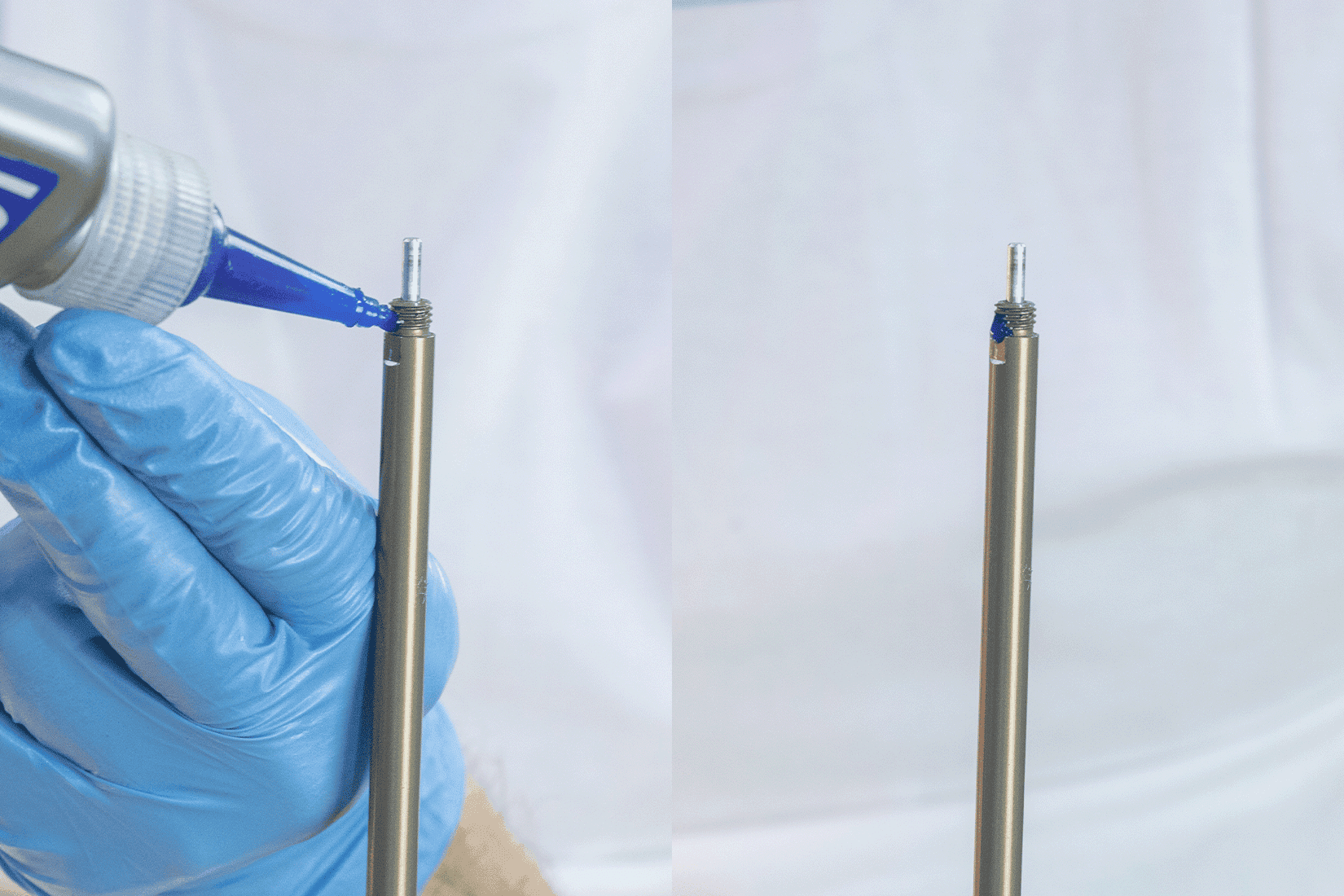
19.
Apply some medium-strength threadlocker (Loctite) to the thread of the piston rod before screwing on the foot unit again.
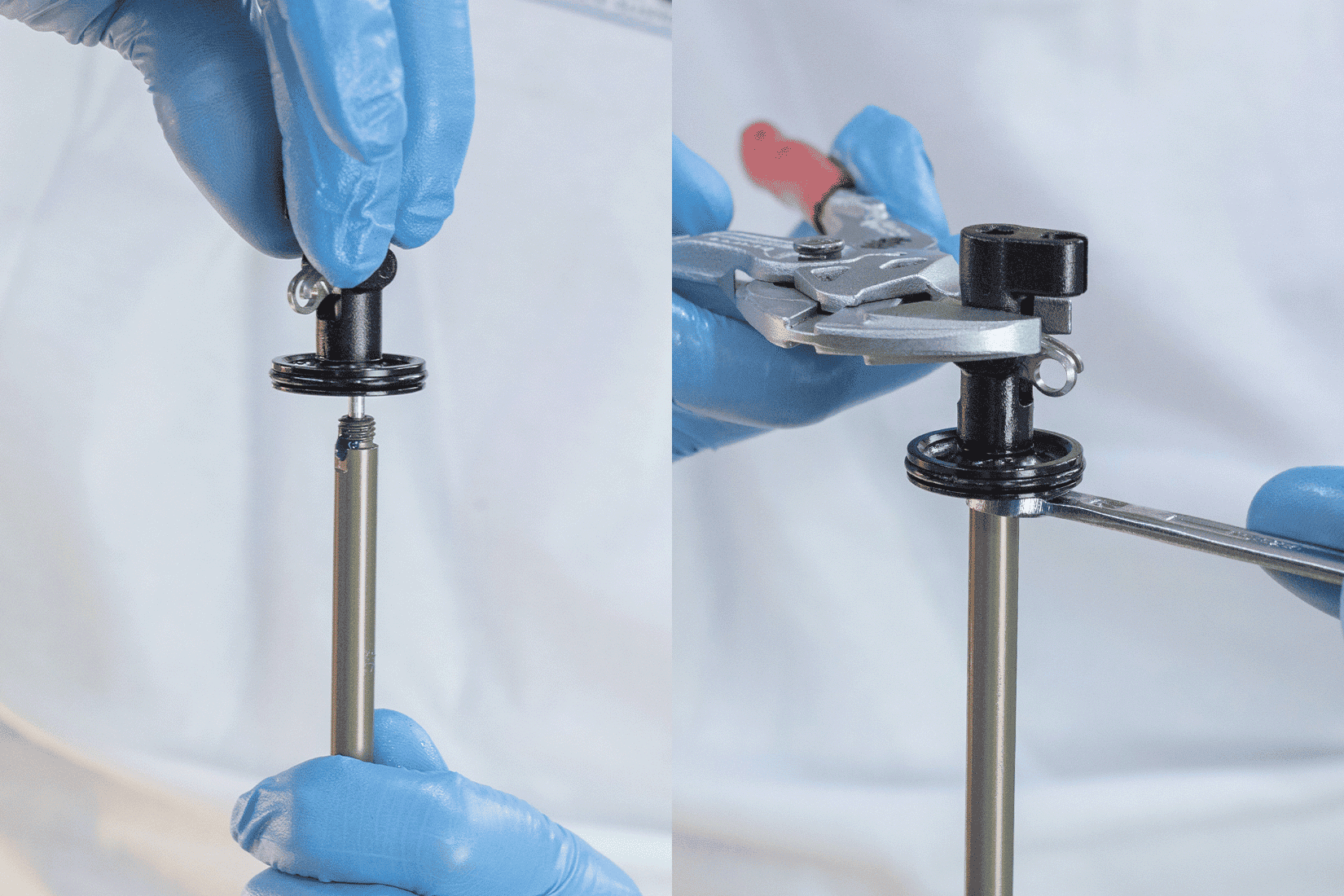
20.
Use a suitable 7 mm and 13 mm open-end spanner and tighten the foot (clockwise) back onto the piston rod.
We specify a maximum torque of 4.5 Nm (hand-tight).
Tool tip: Knipex pliers spanner 86 03 125 and 86 03 180
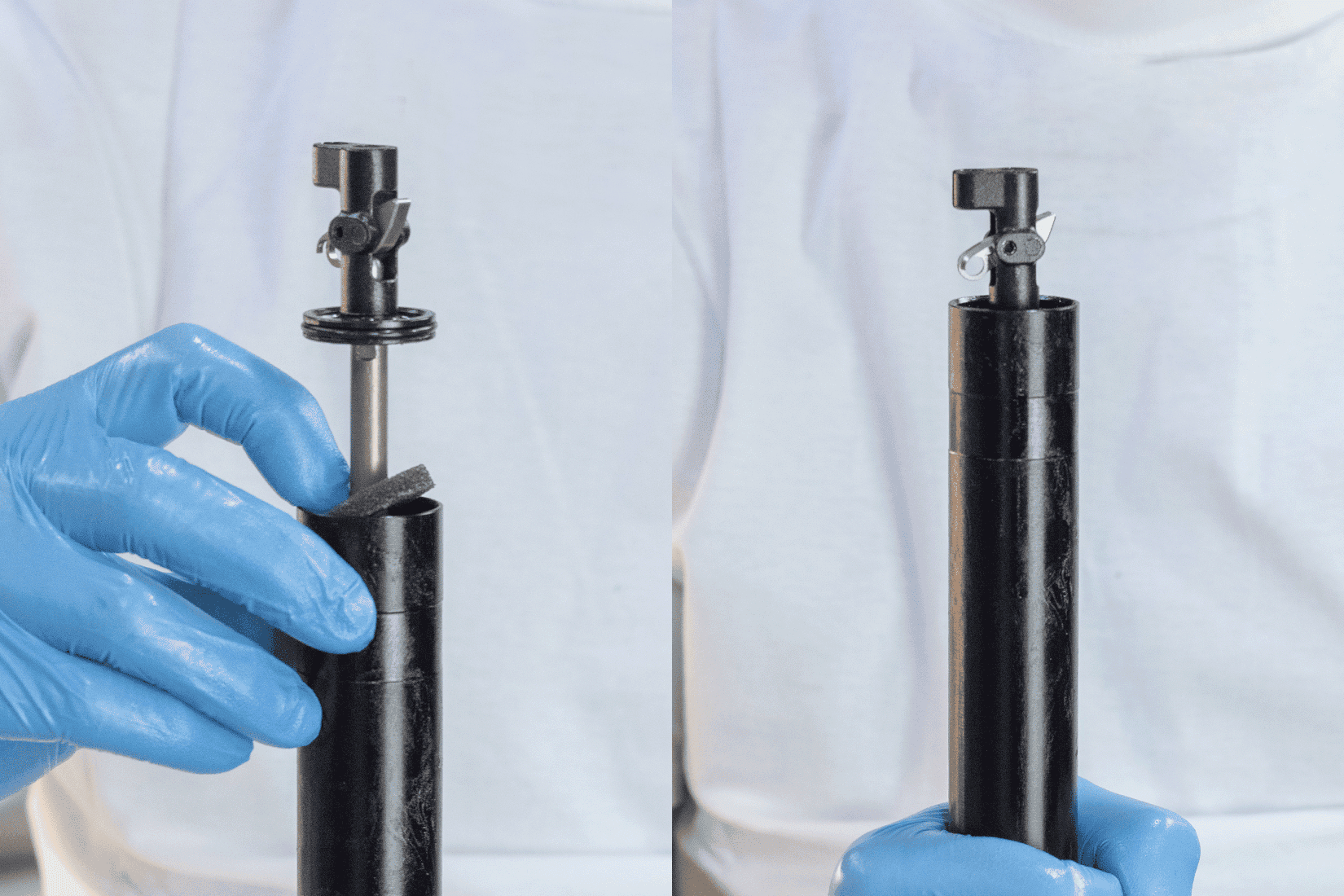
21.
Push the bottom-out-bumper and the foam ring into the lower tube and then pull the lower tube all the way up until the foot unit fully engages.
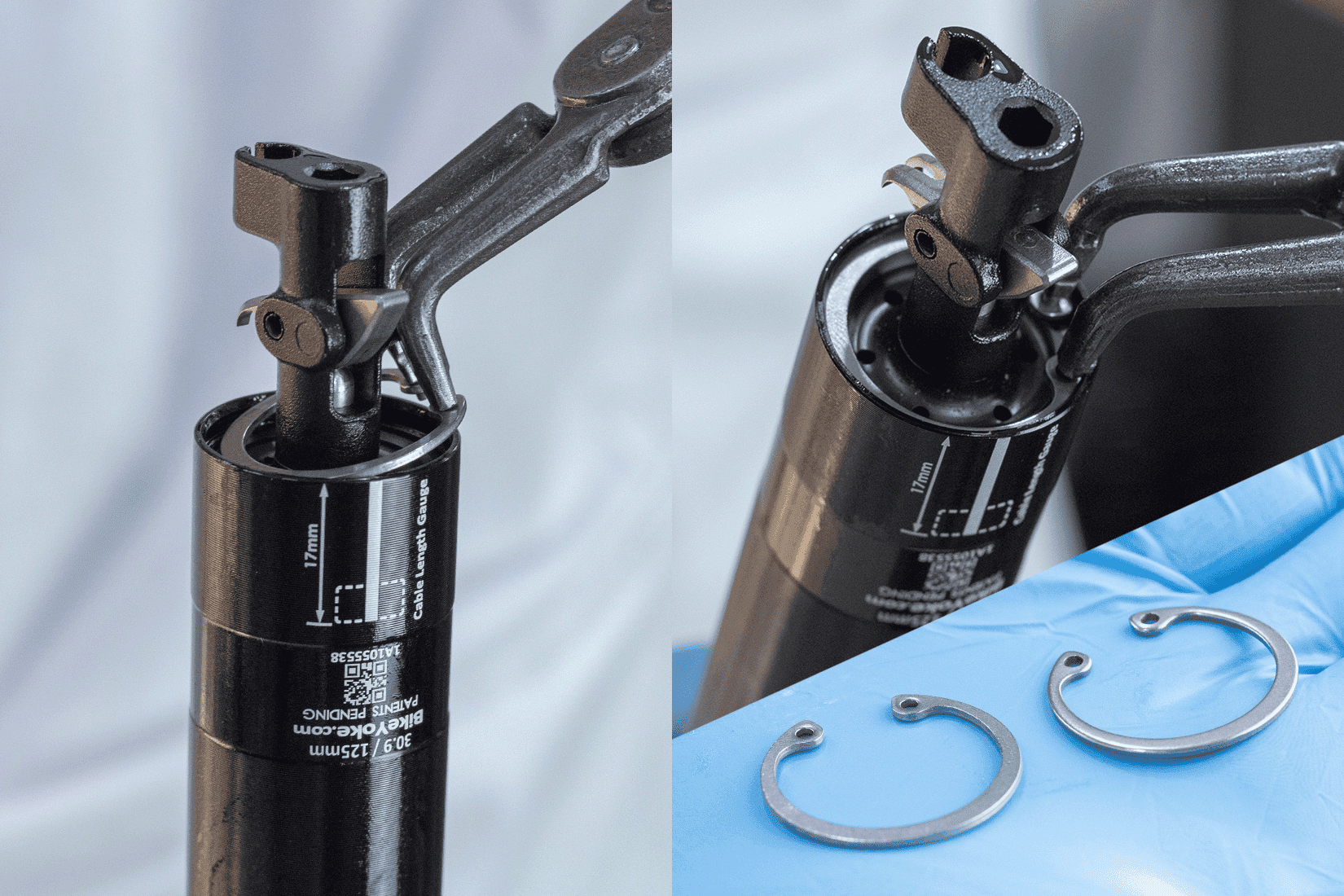
22.
Replace the circlip (DIN472 R28) in the lower tube and ensure that the circlip is seated correctly and completely.
NOTE: Circlips usually have one side with sharp edges and one side with rounded edges. In this case, the side with the sharp edge should point towards the foot unit.
Tool recommendation: Knipex 48 21 J21 19-60 mm for inner rings
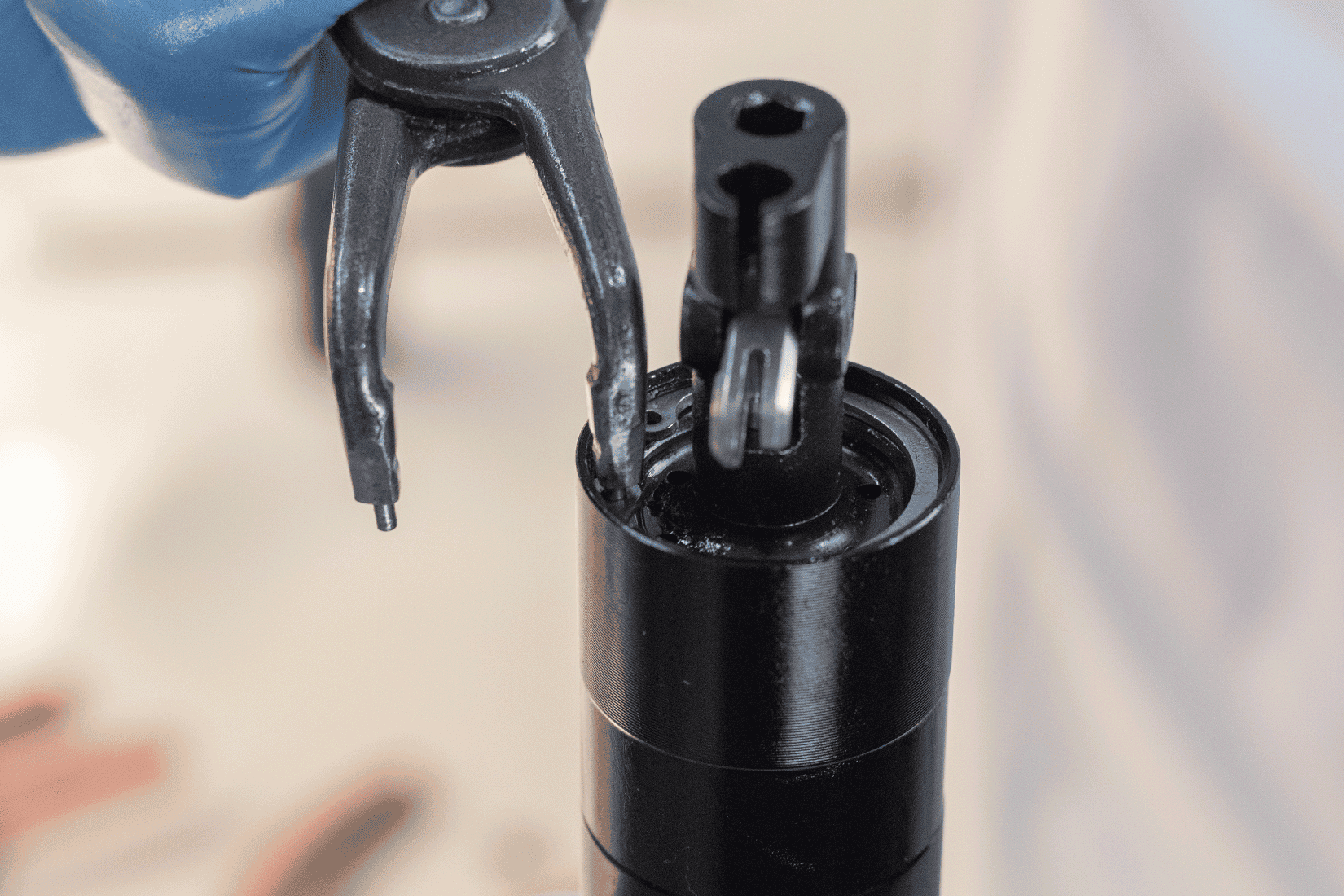
23.
Twist the circlip with one of the pins of the circlip pliers to check again that it is correctly and fully seated.
